This time last year we’d recently returned from Sicily, and two sultry weeks in Ortigia, where the balcony of our apartment looked out over the sea. We watched through our crystal ball, waiting each day for a breeze, but the sailing boats passed by inverted, the air was still and we were becalmed.
The bookshelves were full of DIY handbooks and guides exploring the heat of the island.
But we were looking for shade, and the safety of the shadows on the dark side of the streets. The air-conditioning sucked the sea out of the breeze and dripped it into a bucket out on the the balcony. It was less dehydrated if we just kept out of the sun. All the way to the cool galleries of Palazzo Bellomo.
Norman workshop, 12th century
Fragment of a mosaic with facing lions to the left and right of a palm
Unknown, 13th-14th century
Slab with the Lamb of God between the Virgin Annunciate and the Angel
Byzantine workshop, 10th-11th century
Font decorated with zoomorphic and foliage motifs
Unknown Spanish artist, 15th-16th century
High-relief with Susanna and the Elders
Unknown, 15th century
Madonna and Child: in pinnacle – Pentecost
The master to the Polyptych of Saint Maria, first half 15th century
Polyptych of Saint Maria polyptych
Unknown artist, 10th-11th century
Decorated limestone slabs
Domenico Gagini, 15th century
Madonna suckling the Christ-Child,
also known as the “Madonna with the goldfinch” c.1492
Fra Ignazio Macca, 18th-19th century
Nativity Scene
Workshop of Caltagirone, 18th century
Flask with six handles and a representation of Saint Lucy
Unknown workmanship, 19th century
The First Archaeological Museum in Syracuse
Francesco Paolo Priolo (Palermo 1818-1892)
Saint Paul preaches in the latomia of the ropemakers, 1867
Antonello da Messina, 15th century
Annunciation, 1474
Mary has crossed hands while being reached by the dove of the Holy Spirit, sent by God…
Giovanni Carafa, Duke of Noja, 18th century
Relief map of Syracuse
Unknown artist (Fra Pietro Fortezza?), 19th century
Model of the City of Syracuse (Ortigia)
Alessandro Padovano & Giovanni Maria Trevisano, 16th century
Translation of the Holy House, 1507
Emanuele Lampardo, 16th-17th century
The Creation of the Heaven and the Earth
Emanuele Lampardo, 16th-17th century
The Creation of the Light
Emanuele Lampardo, 16th-17th century
The Creation of the Day and the Night
Emanuele Lampardo, 16th-17th century
The Creation of the Waters
Emanuele Lampardo, 16th-17th century
The Creation of the Animals, the Fishes and the Birds
Emanuele Lampardo, 16th-17th century
The Creation of the Man and the Woman
Emanuele Lampardo, 16th-17th century
The Original Sin
Emanuele Lampardo, 16th-17th century
The Expulsion from Paradise
We left the Galleria Regionale in the beautiful 13th-15th century Palazzo Bellomo via narrow shady streets towards the Castello Maniace at the end of the promontory on the southern tip of the island.
※
Maniace Castle, locally known as Castello Maniace, lies in the city of Syracuse, in the province of Syracuse on the island of Sicily in Italy.
Maniace Castle was built between 1232 and 1240 during the rule of Frederick II, the Holy Roman Emperor. It is situated at the extreme point of the island of Ortygia, on which the ancient city of Syracuse was located. Together with the, now disappeared, Marchetto Castle it controlled the harbour and city of Syracuse. It was built on the spot of an earlier fort, built by George Maniakes, the Byzantine Greek general who had conquered Sicily from the Arabs in 1038. Hence the castle was named after him.
During the 13th century Maniace Castle was used as a royal residence. After the Sicilian Vespers it was resided in by the new King of Sicily; Peter III of Aragon and his wife Constance of Sicily.
In 1300 the castle was the place where a truce was signed between Frederick III of Sicily, King of Sicily, and Robert of Anjou, King of Naples. In 1302 it became the seat of the Royal Chamber, a feudal domain given by Frederick III to his wife Eleanor of Sicily as a royal dowry. It remained a hereditary domain of the Queens of Sicily until 1537.
After a banquet held in Maniace Castle in 1448, Captain Giovanni Ventimiglia accused all the guests of treason and had them killed.
In the last half of the 15th century, under the reign of Ferdinand II of Aragon, the castle was used as a prison and strengthened by Captain Goncalves of Cordoba.
During the 16th century, during the reign of Charles V, Holy Roman Emperor, the castle underwent many changes and turned into a real fortress when new outer walls were erected around it.
In the first half of 17th century Maniace Castle housed a garrison. It was strengthened again and renamed St. James Castle. In the second half the castle was equipped with a new battery at its southern end, named The Diamond, because of its shape. In 1693 the castle was damaged by an earthquake.
In 1704 Maniace was extensively damaged when a storm caused the explosion of the gunpowder magazines. It was rebuilt during subsequent years and warehouses were built within the castle’s walls.
During the Napoleonic Wars the castle was adapted to the current state of warfare and the ramparts were equipped with cannons. In 1838 new barracks were built inside the castle. In 1860 Maniace Castle was handed over to the troops of Giuseppe Garibaldi, the Italian general who conquered Sicily during the Expedition of the Thousand.
Maniace Castle remained a military structure until the 1970’s when it was demilitarized. Between 1993 and 2003 it was restored.
This is a great castle which shows details of its use during several centuries. The grand hypostyle hall, dating back to the early beginnings of the castle, is magnificent.
And then we ventured even further, beyond the castle into the fortifications of the Vignazza Bastion, also known as the Diamond. It’s like the prow of a stone ship pointing out into the Ionian Sea.
Its lower deck is a series of vaulted spaces with windows looking out to sea on one side, and across the bay of Porto Grande on the other. Beautiful stone arches, man-made caves, resonant echo-chambers. It also provides welcome shade and a quiet refuge, though I’m sure that was not always its purpose.
The perimeter wall on the upper deck retains sculptural traces of Napoleonic gun emplacements.
The view down the west side of the island along Lungomare Alfeo to the Fonte Aretusa.
Fonte Aretusa (is) one of the most famous springs of the Greek world. The spring of the nymph Arethusa was celebrated by Pindar and Ovid: when Arethusa was bathing in the River Alpheios near Olympia, the river god fell in love with her. In order to escape from him, Arethusa plunged into the Ionian sea and reappeared here. Transformed by the goddess Artemis into a spring, she was pursued here by Alpheus, who mingled his river water with that of the spring: it was believed that the river the Peloponnese was connected, via the sea, to the fountain of Arethusa. A freshwater spring, called the Occhio della Zillica and said to be Alpheus, still occasionally wells up in the harbour. The spring of Arethusa diminished after the erection of the Spanish fortifications. Nelson stopped here before the battle of the Nile in 1798 and noted in a letter that ‘surely, watering at the fountain of Arethus, we must have victory’. The fountain now flows into a pond (built in 1843), planted with papyrus, abounding in fish and inhabited by ducks, under a venerable old Morton Bay fig tree.
By the spring is the Aquarium, with some of the fish to be found in the Ionian Sea. The attractive seafront here with its shady Ficus benjamina trees is a favourite spot for the passeggiata.
Blue Guide Sicily: Ellen Grady
※
So, after dinner, that’s just what we did. We walked beneath the giant fig trees of Largo Aretusa and then along the waterfront to the marina, before joining Via Savoia where we met a familiar figure.
It took a moment or two to remember where we’d seen her before… at the church of San Filippo Apostolo a few days earlier. Today was 15th August, Assumption Day and the Madonna Santissima was on walkabout around the town. The procession was accompanied by an enthusiastic and boisterous brass band. It was infectious, we were drawn in, following the crowds through the streets.
We were led by a group of three women, two either side of a little old lady who plotted our route with a determined precision. Every so often a whistle blew and they stopped to let the rest of us catch up.
At the Chiesa di San Filippo Apostolo the three ladies went on ahead,
whilst onlookers collected handfuls of the Virgin’s confetti.
The procession followed on into the square, and the Madonna turned around to face the fireworks.
Before returning home.
San Filippo Apostolo is a great example of Ortigia’s thick layers of history, piled one on top of another.
Built on a medieval synagogue, this church has a burial crypt, tunnel system, and Jewish ritual bath hiding deep underneath.
Chiesa di San Filippo Apostolo
And so the band disbanded and we said goodnight to Ortigia.




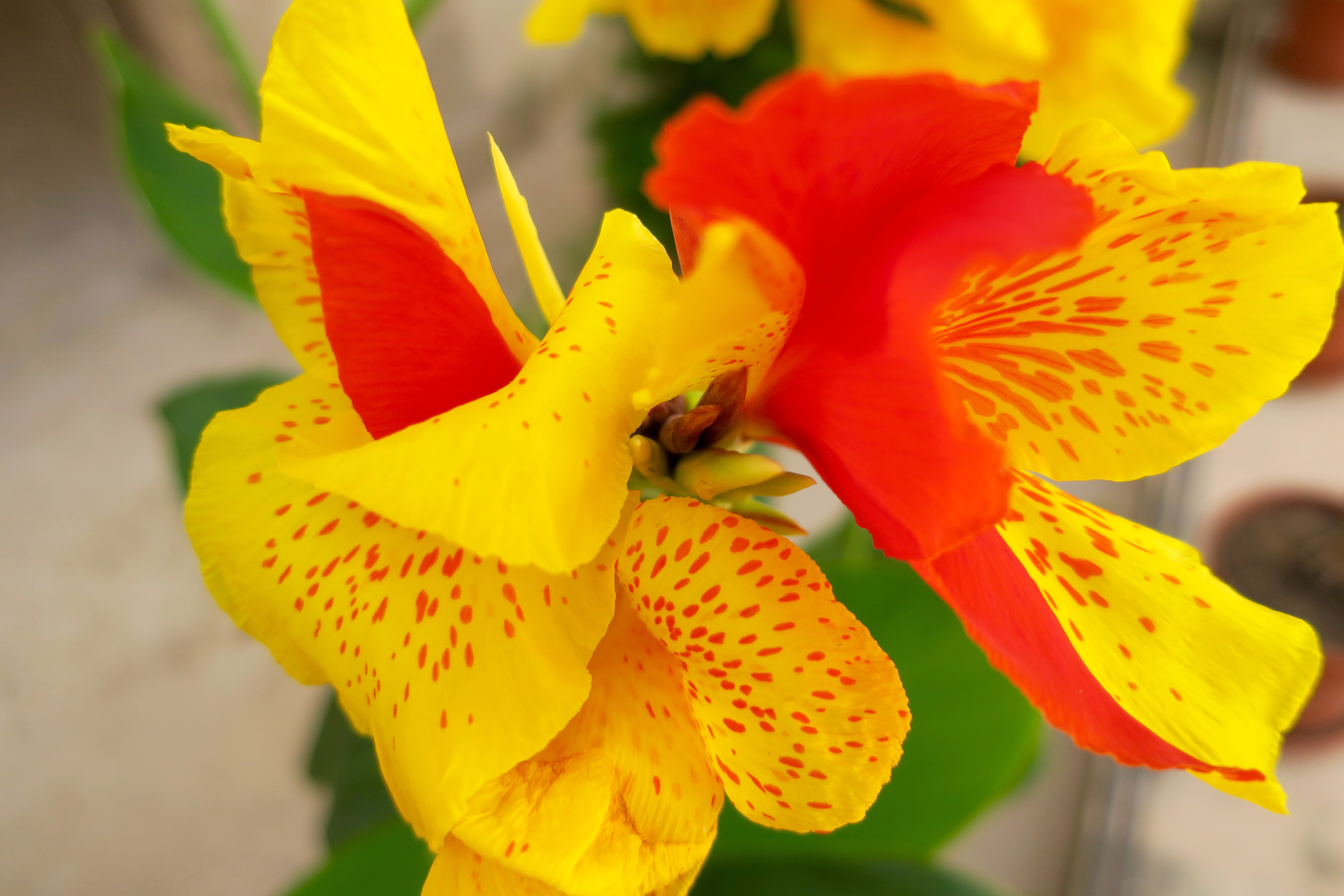

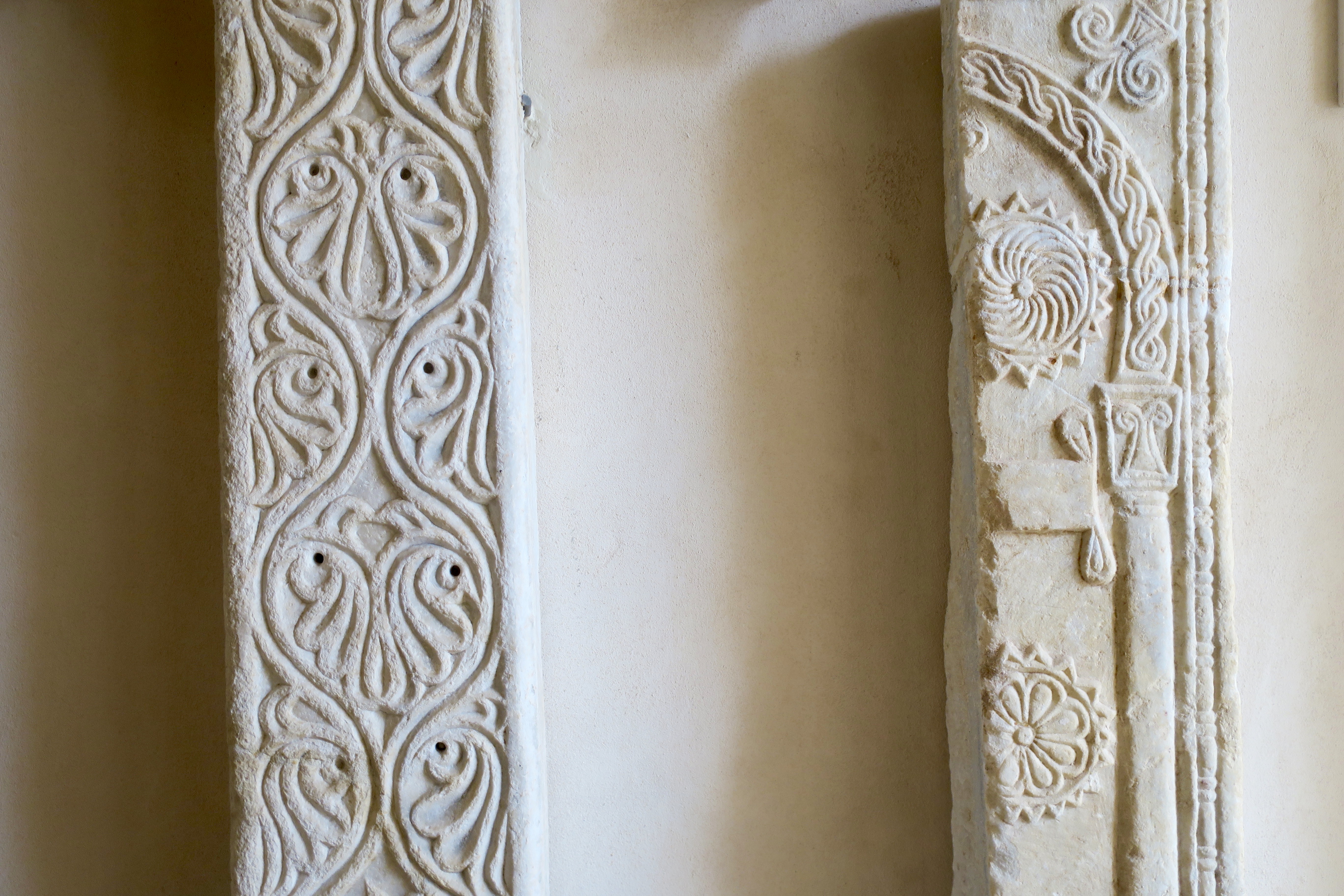
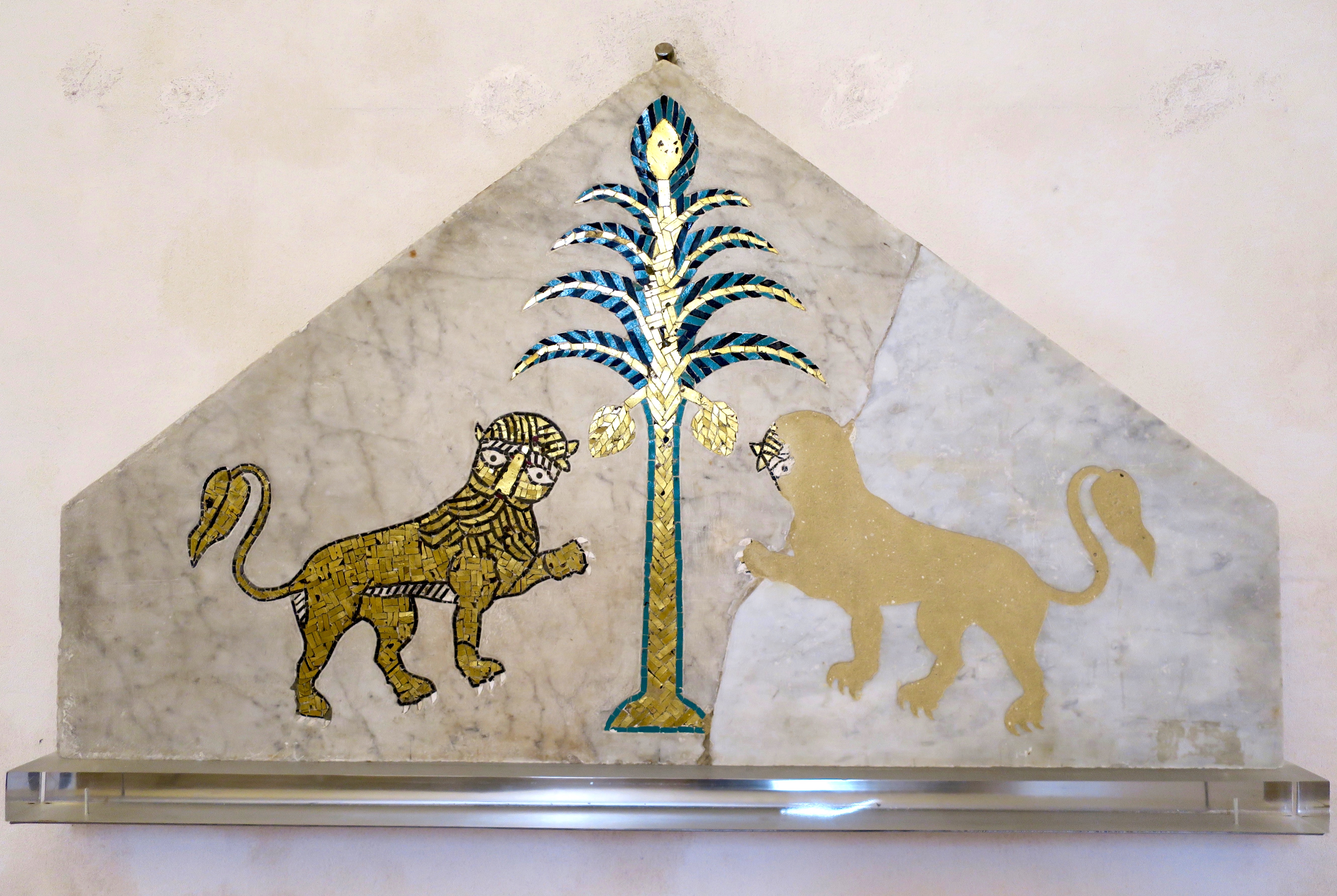
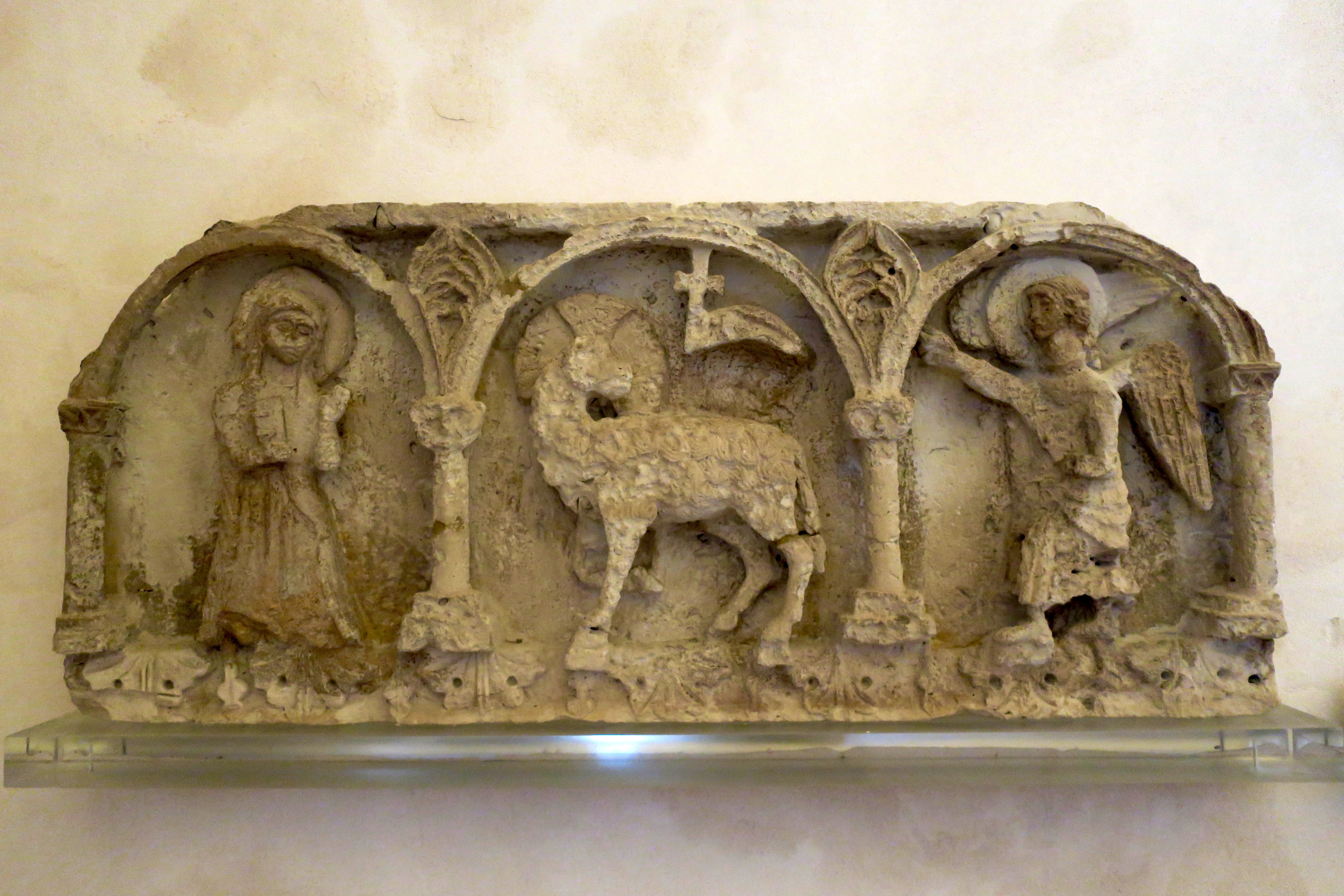
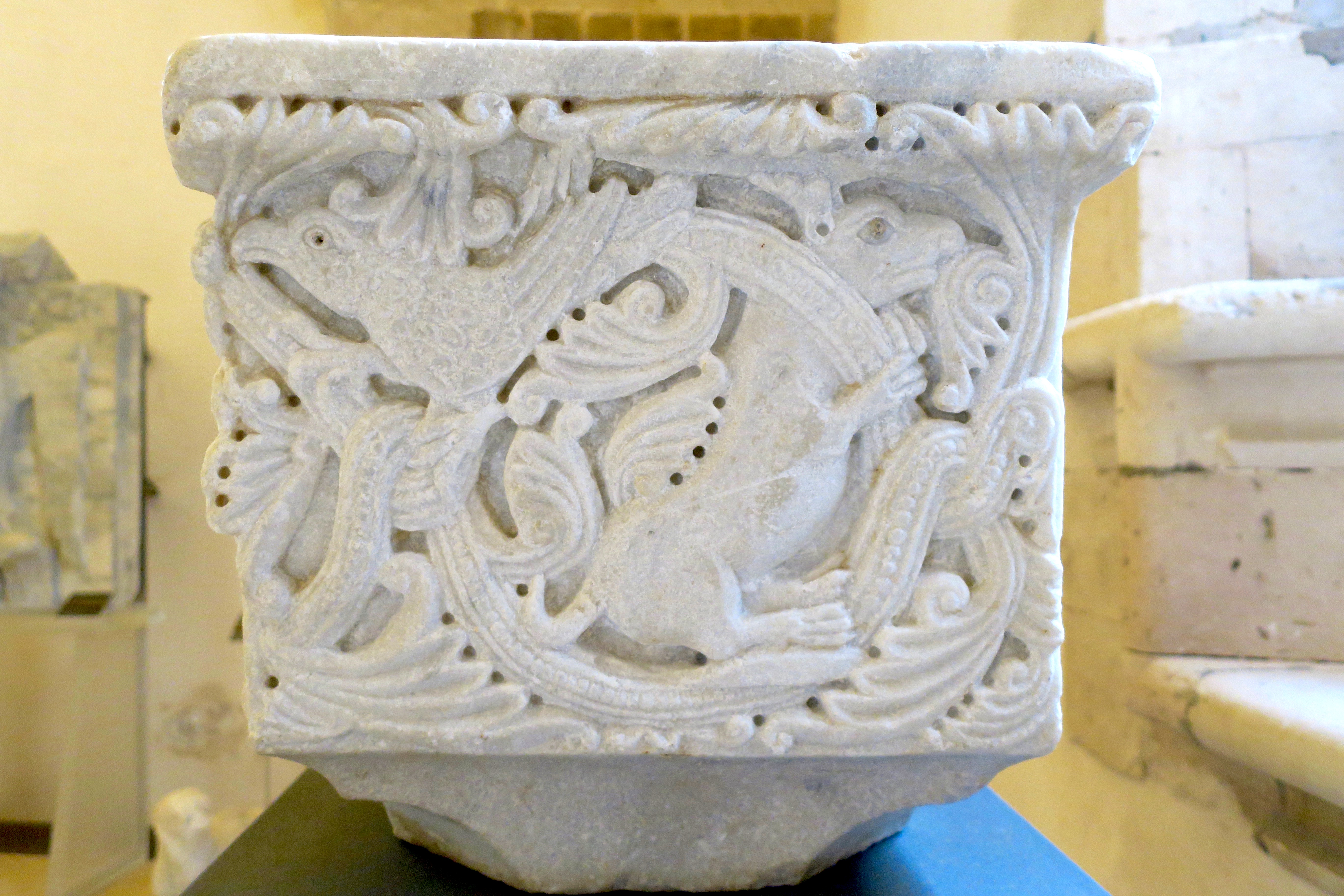

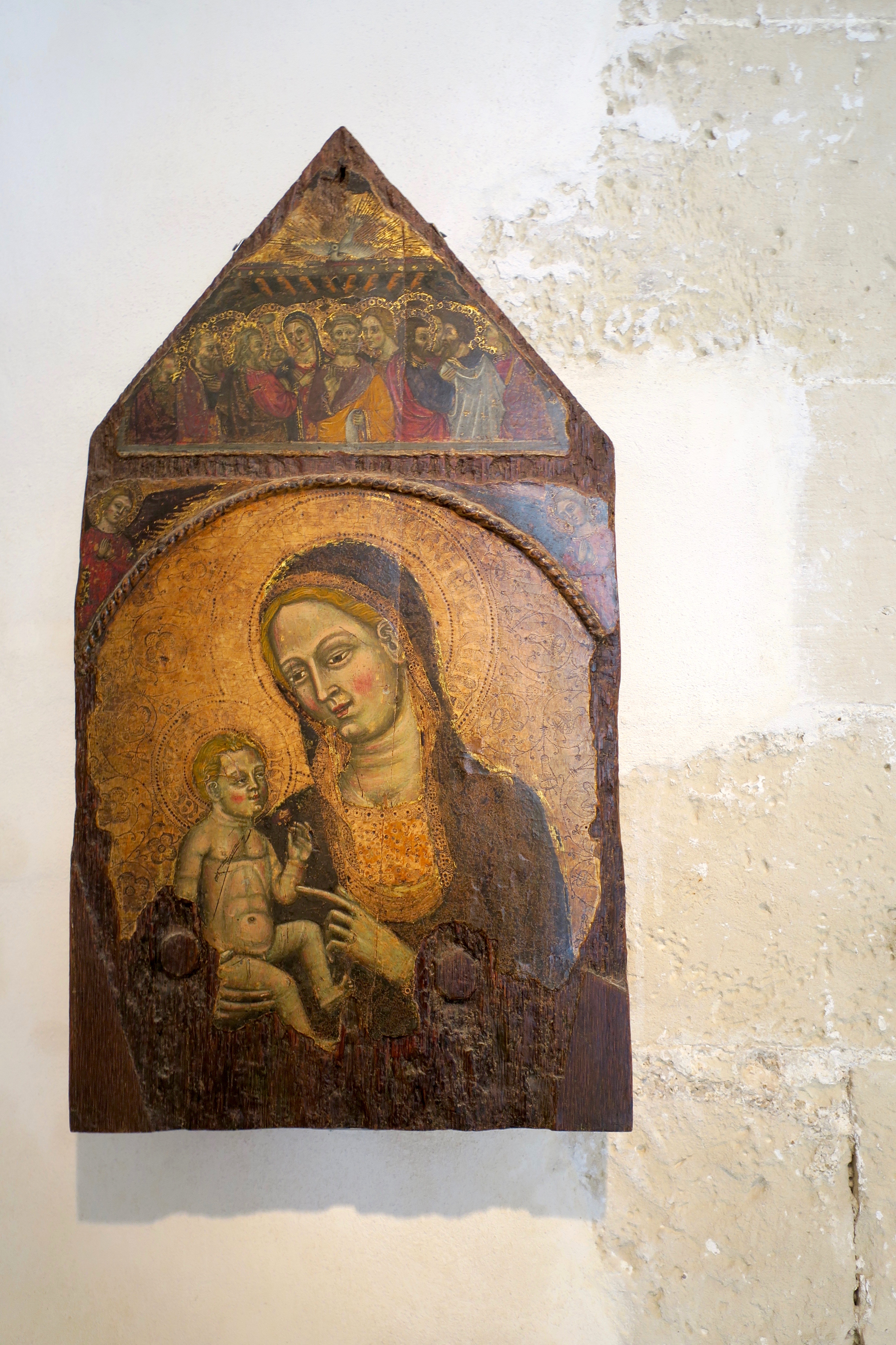
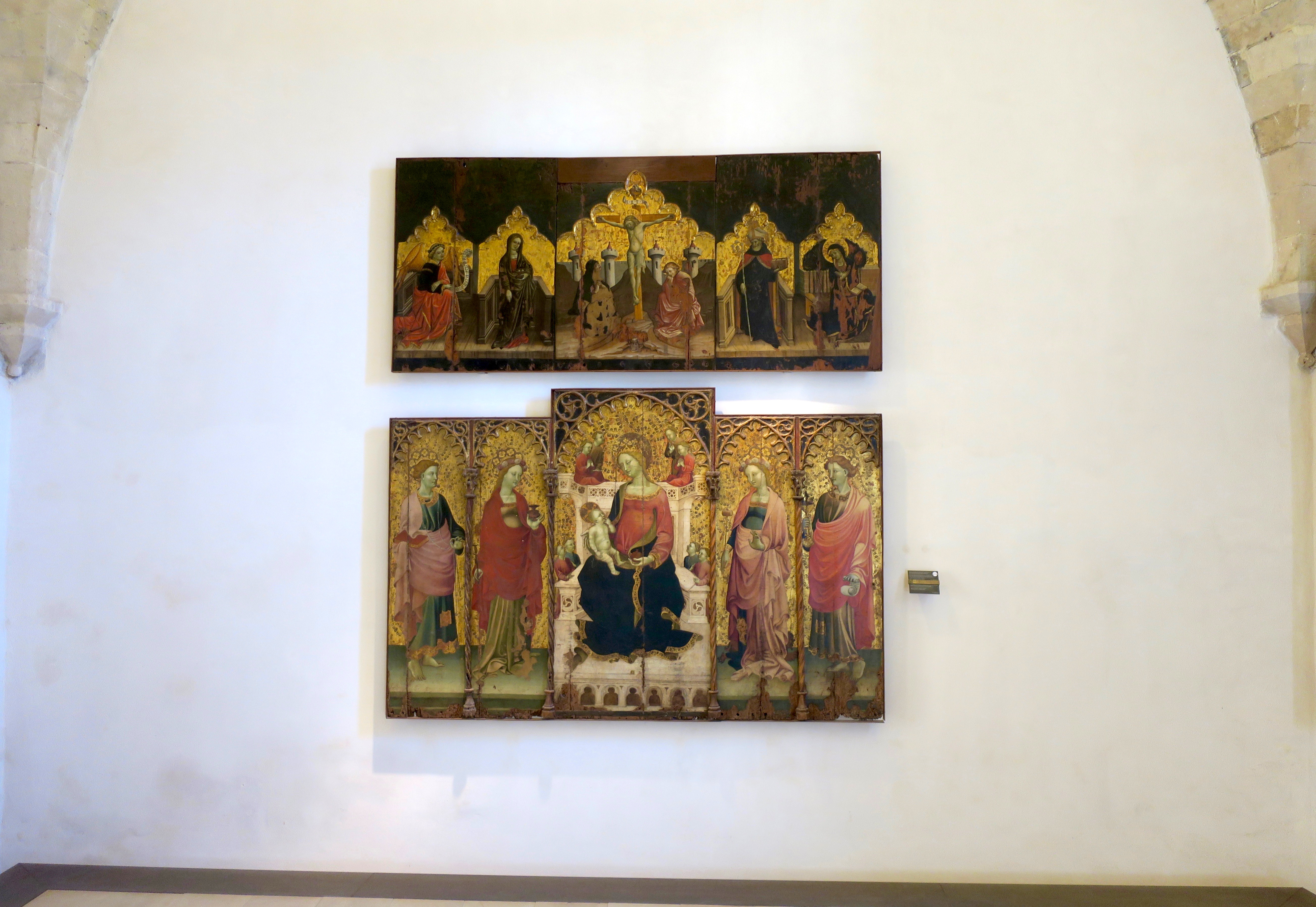

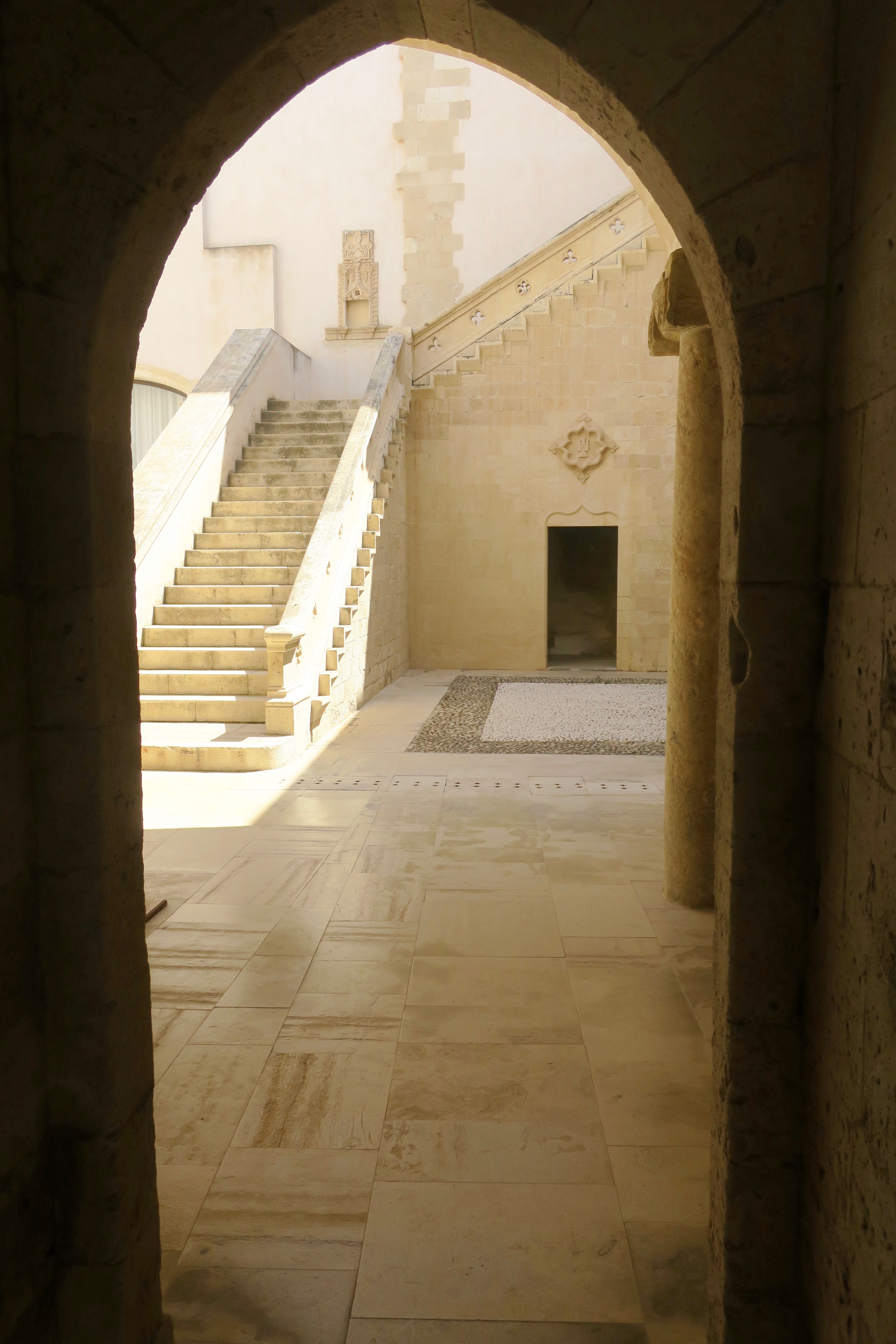

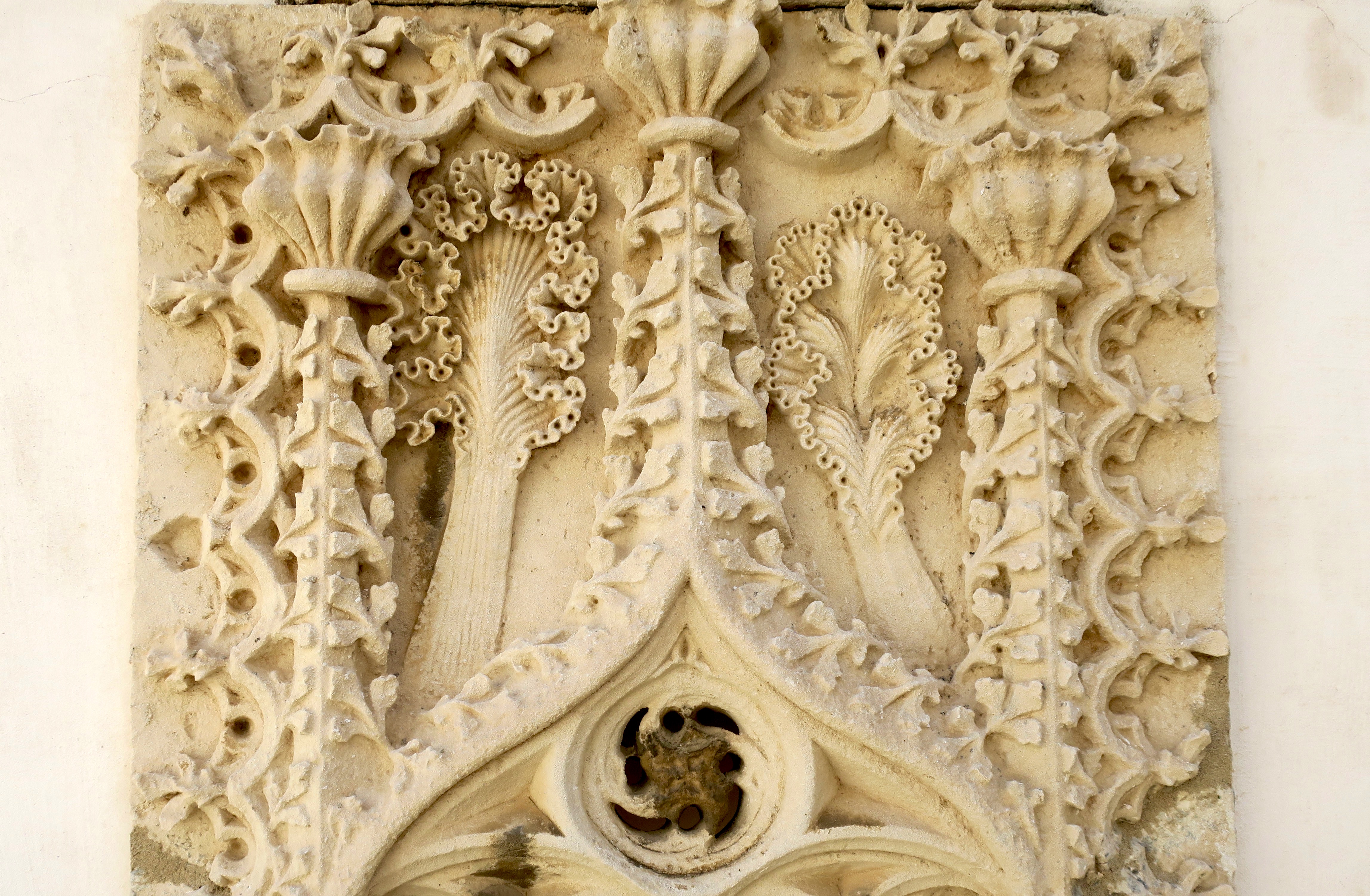
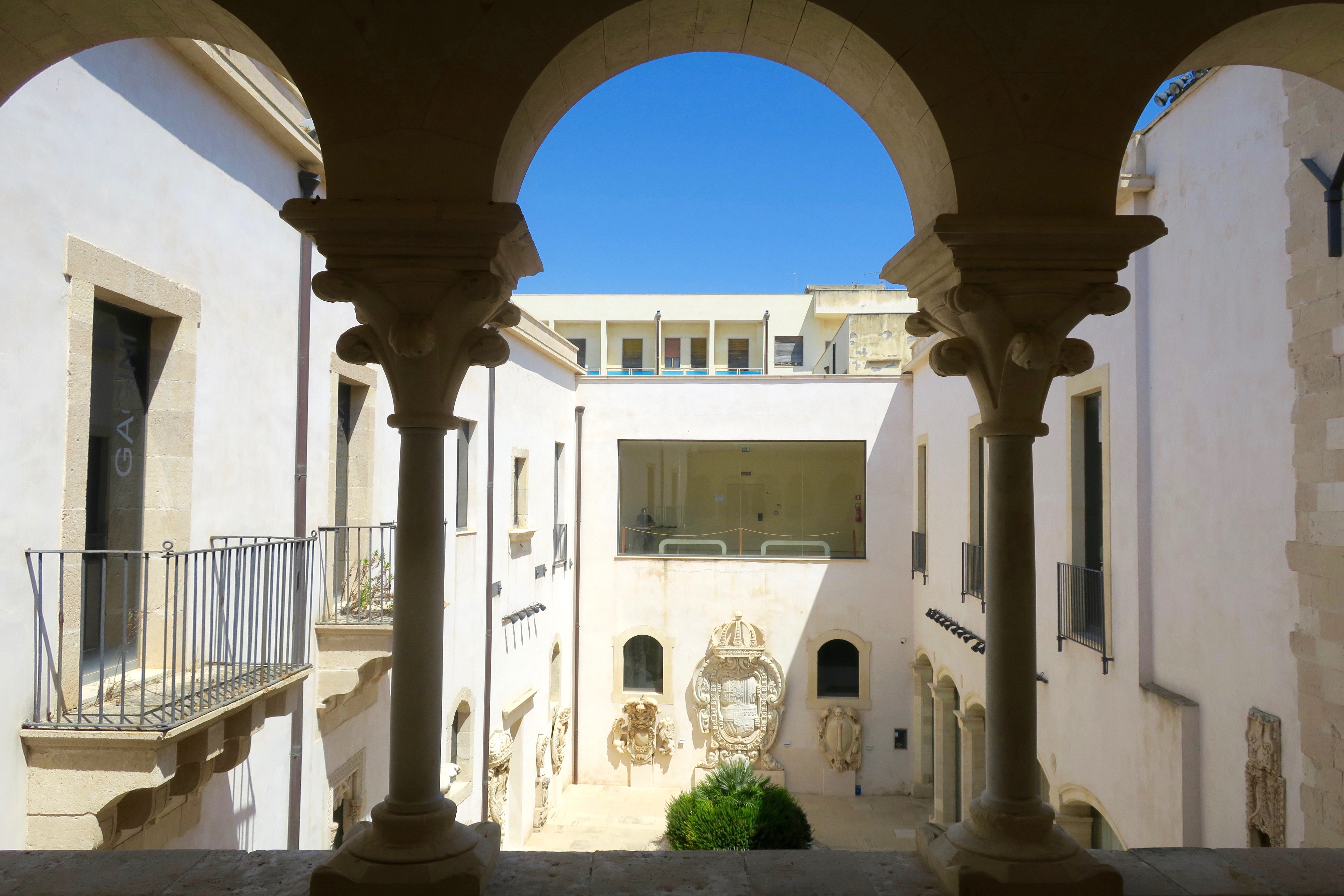
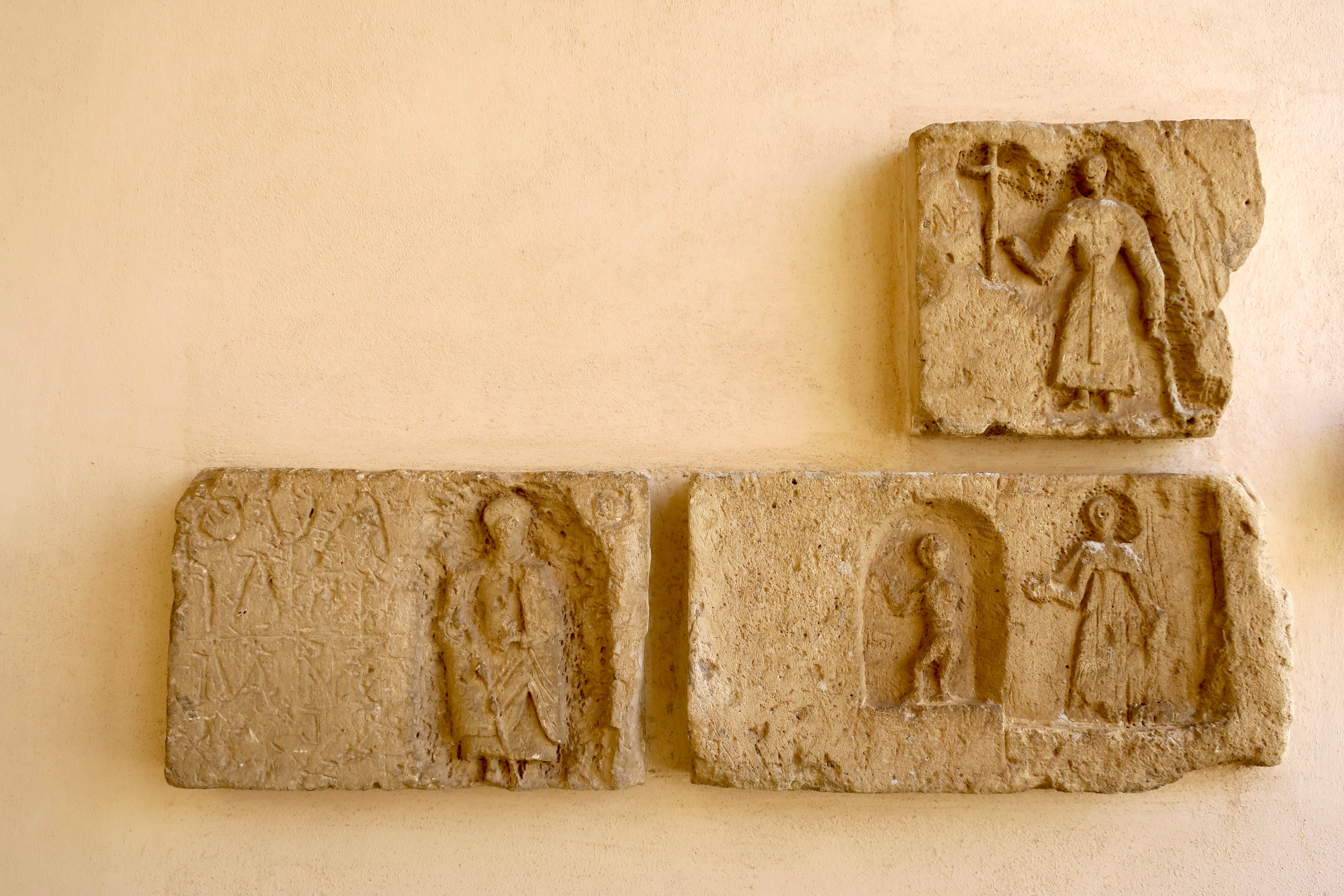



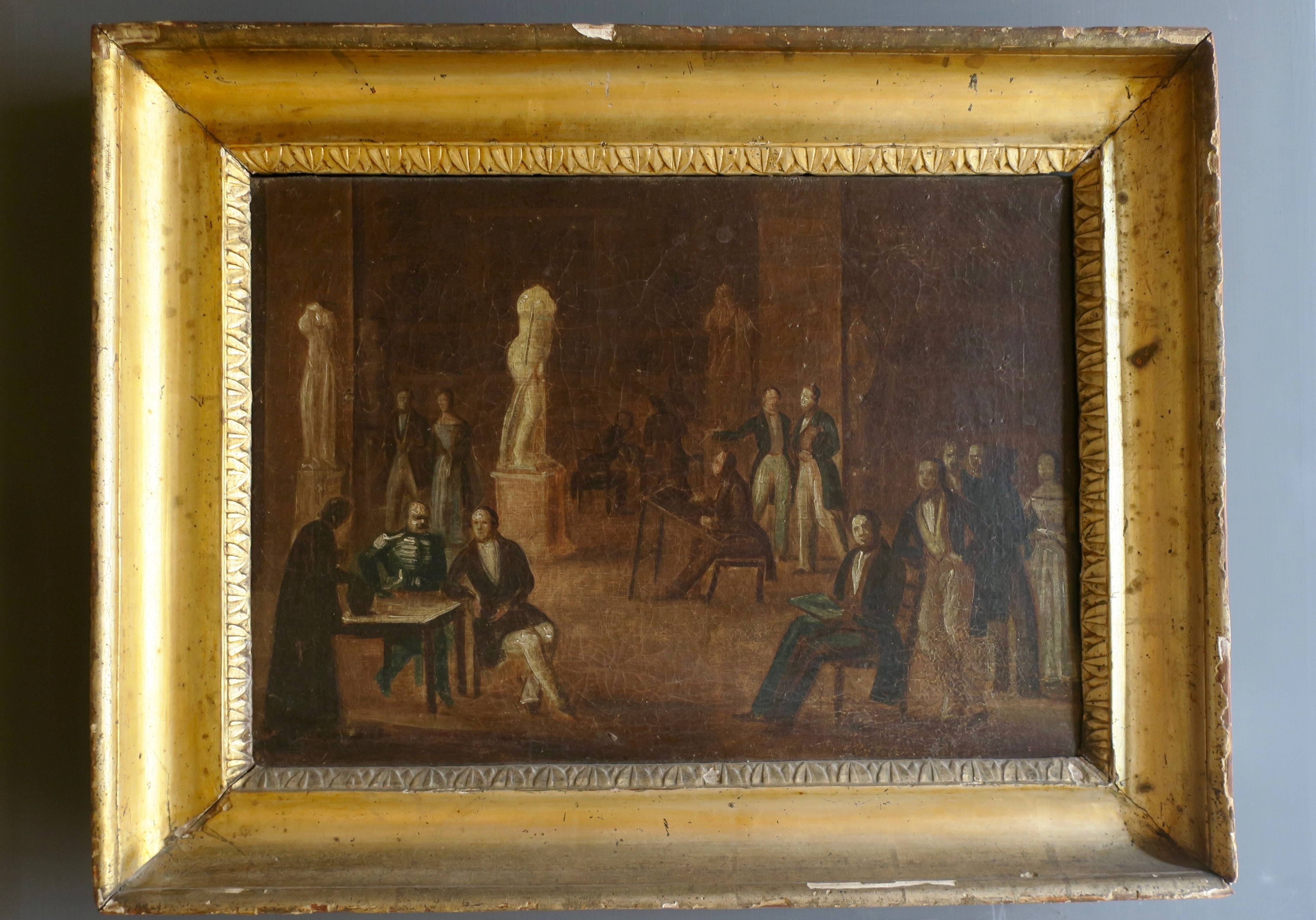
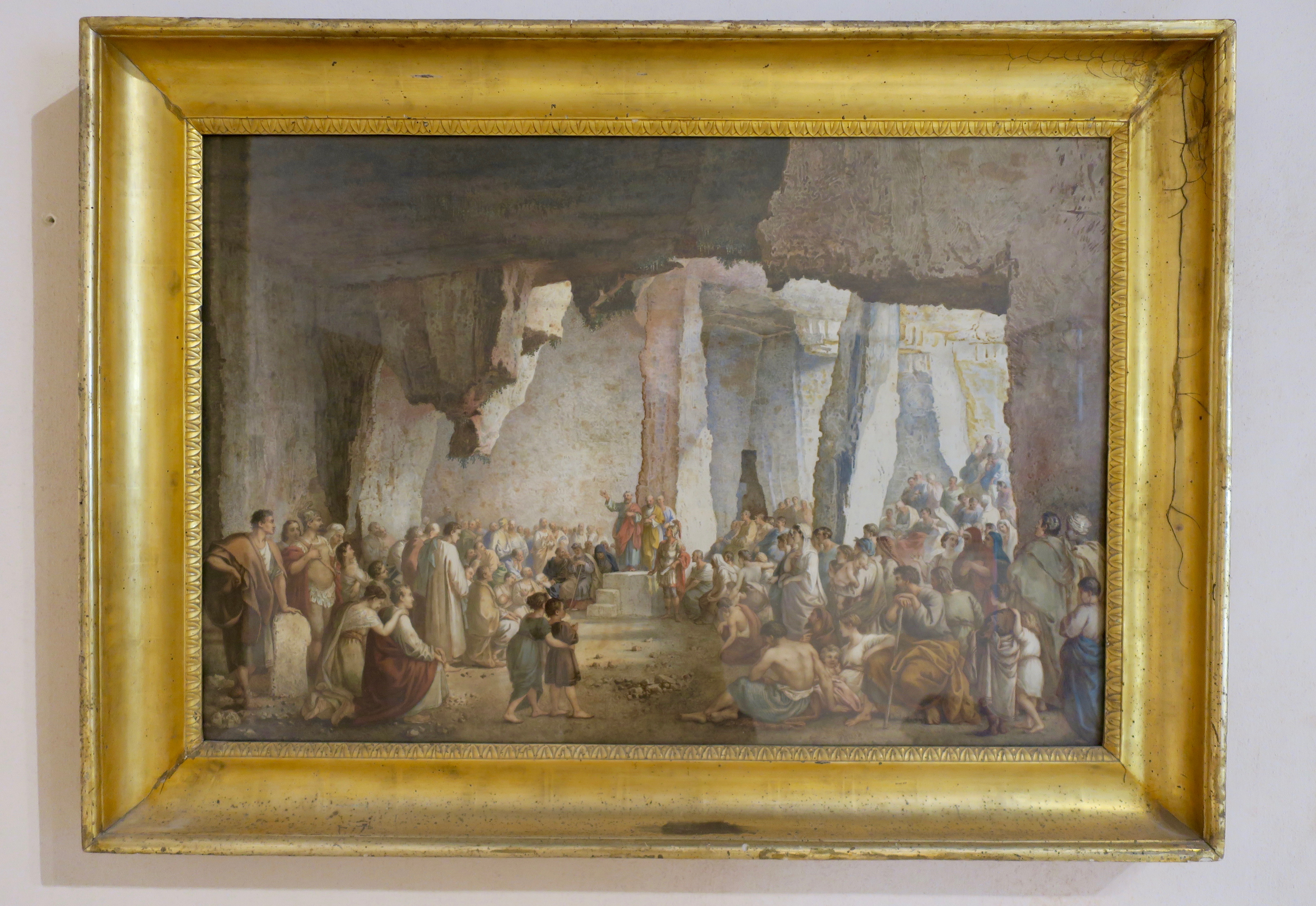
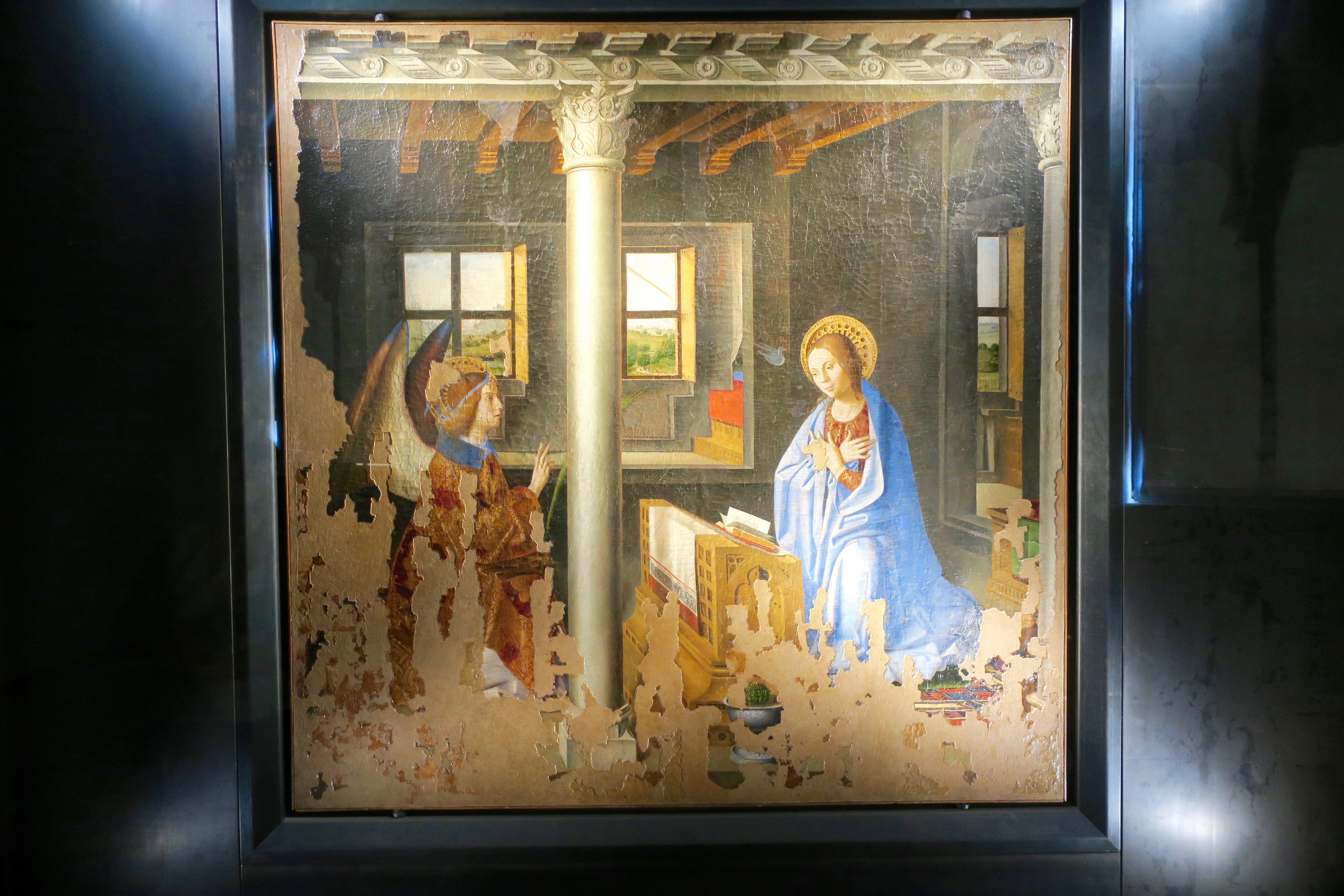
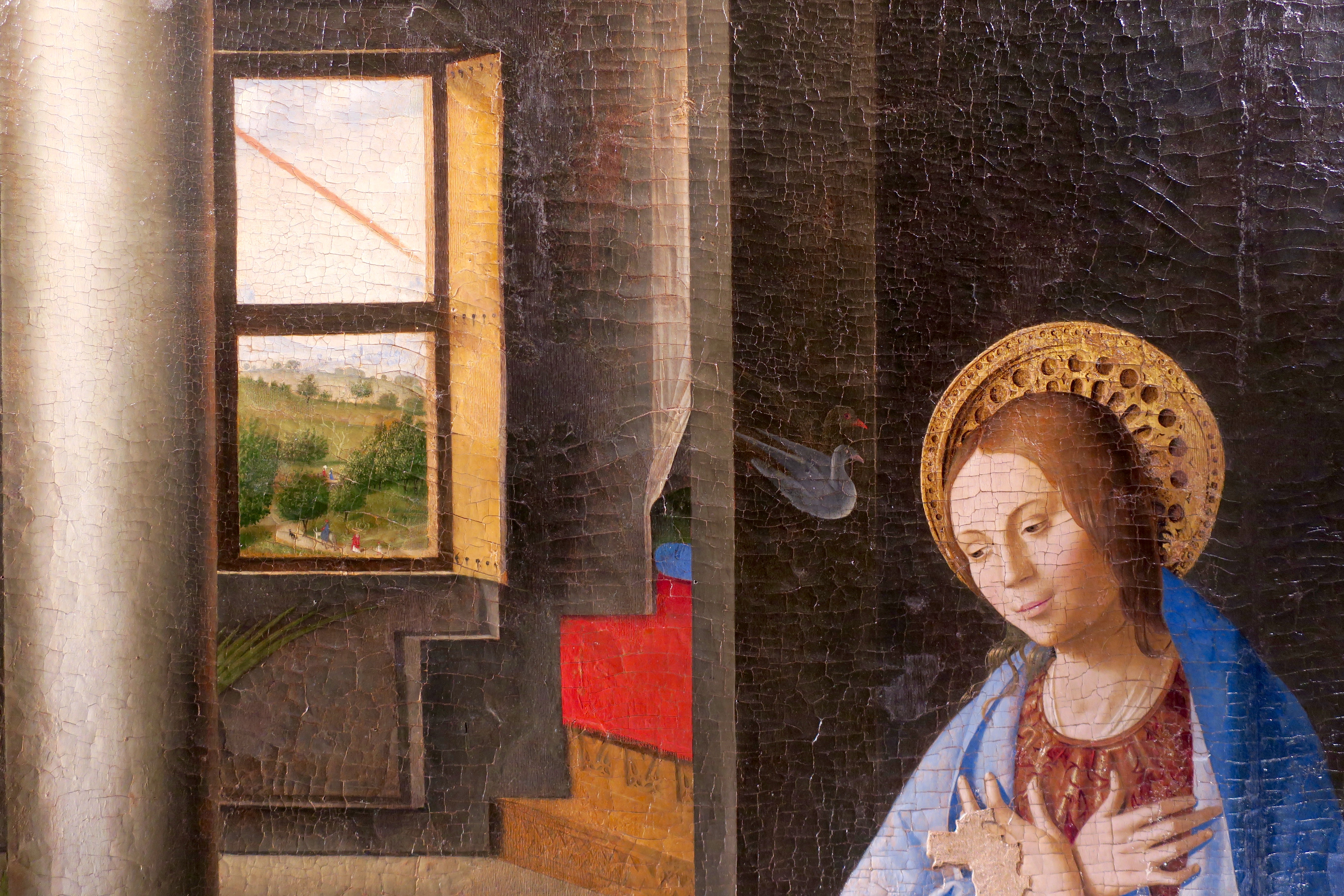
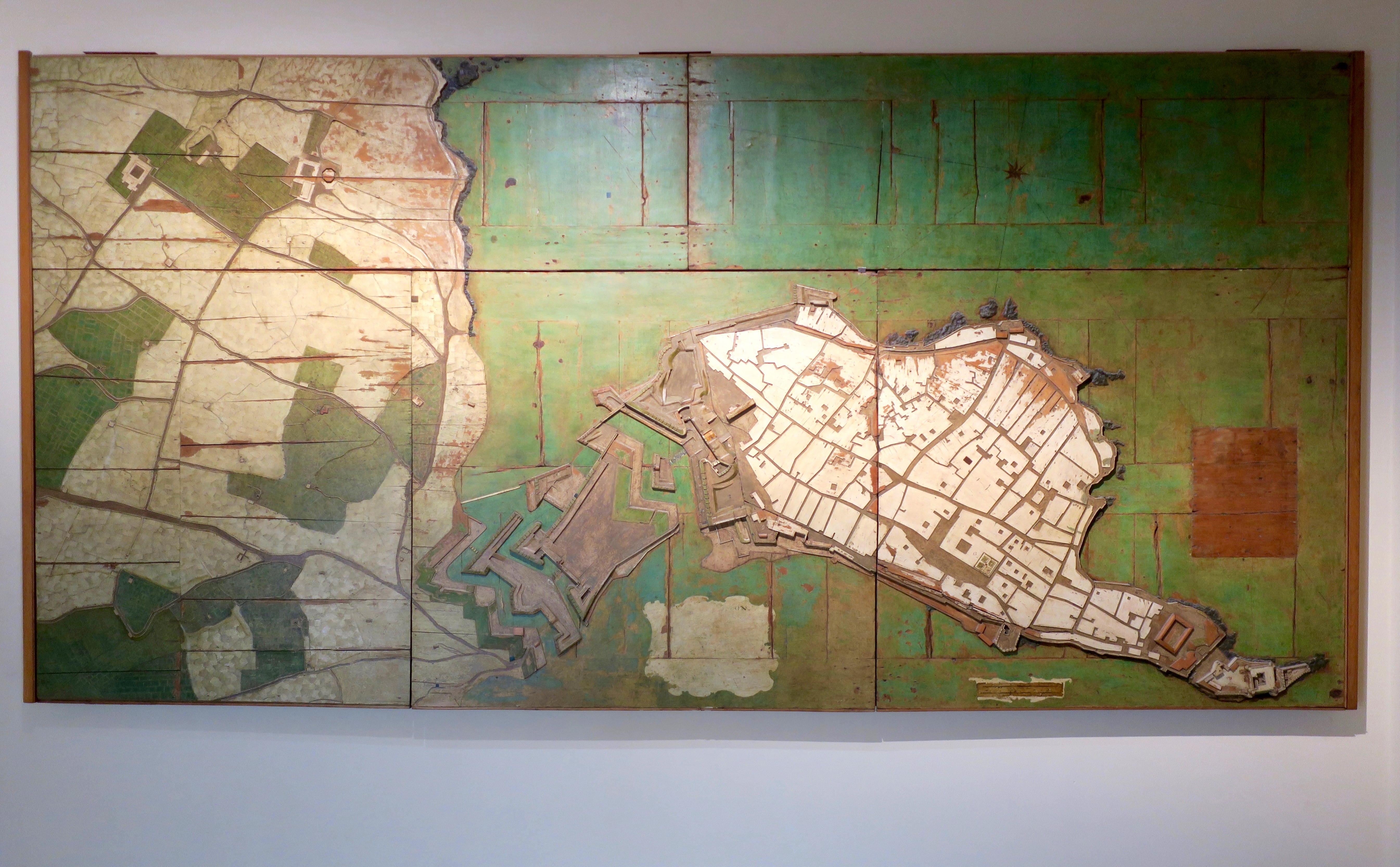
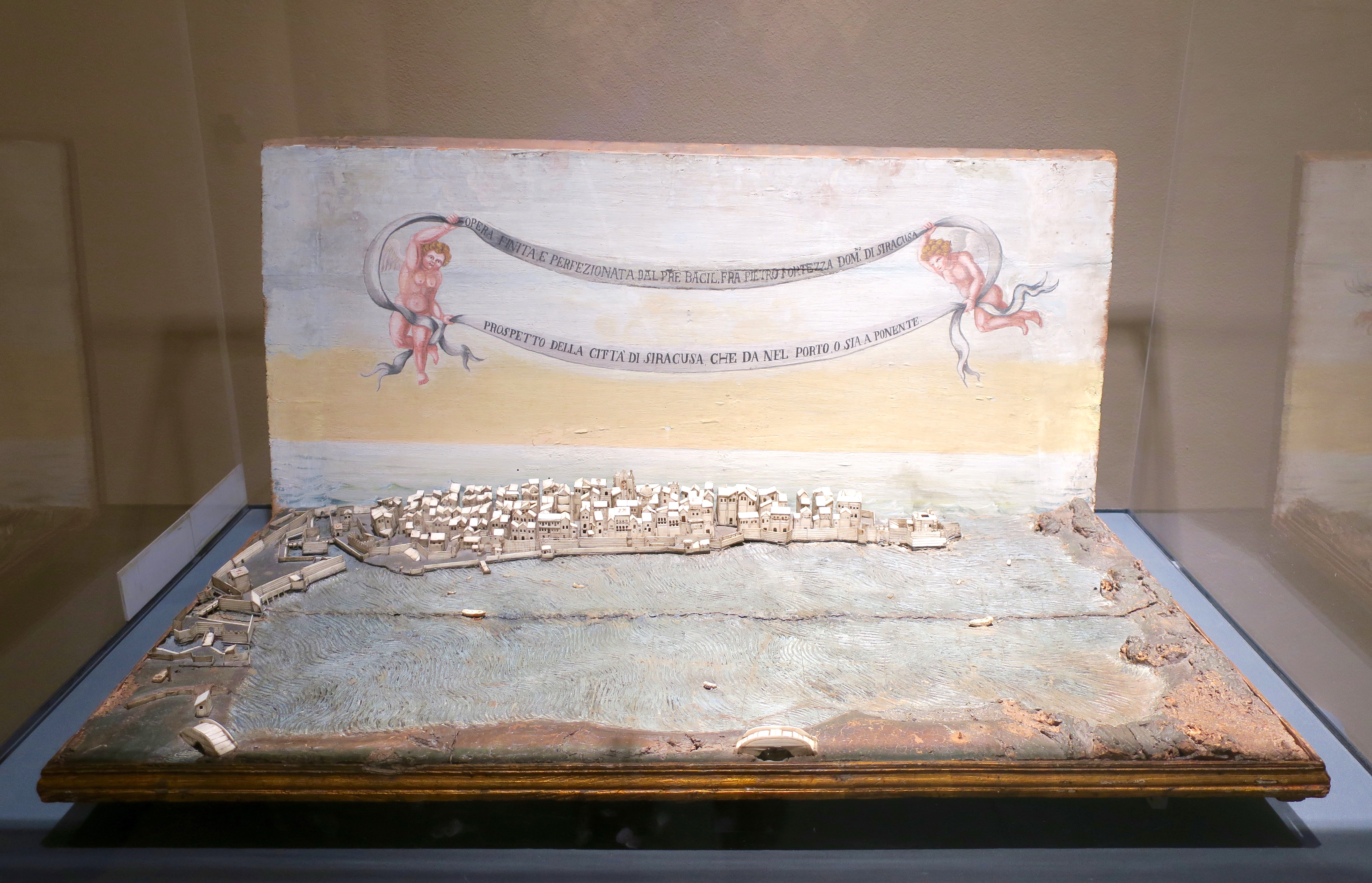

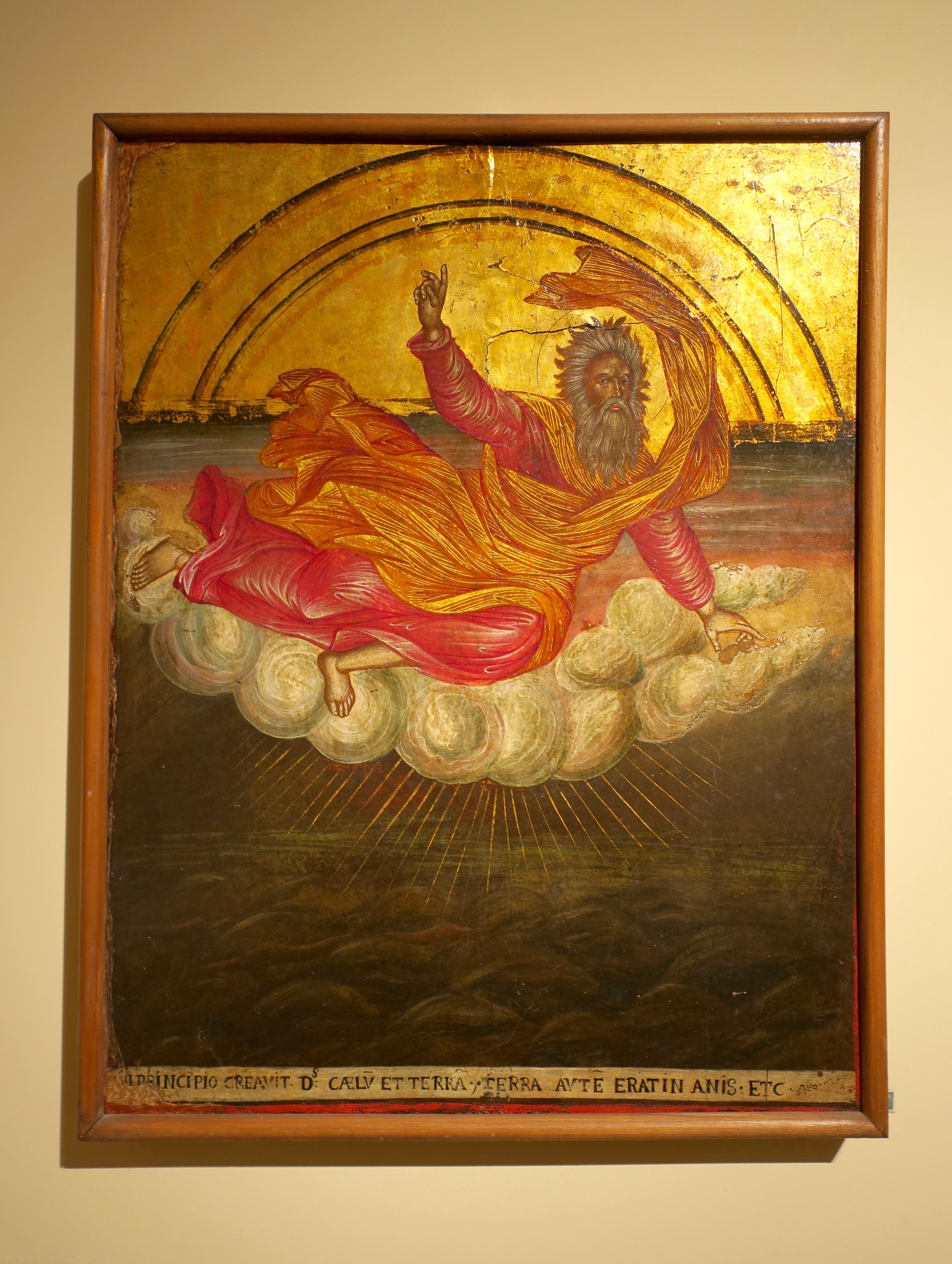
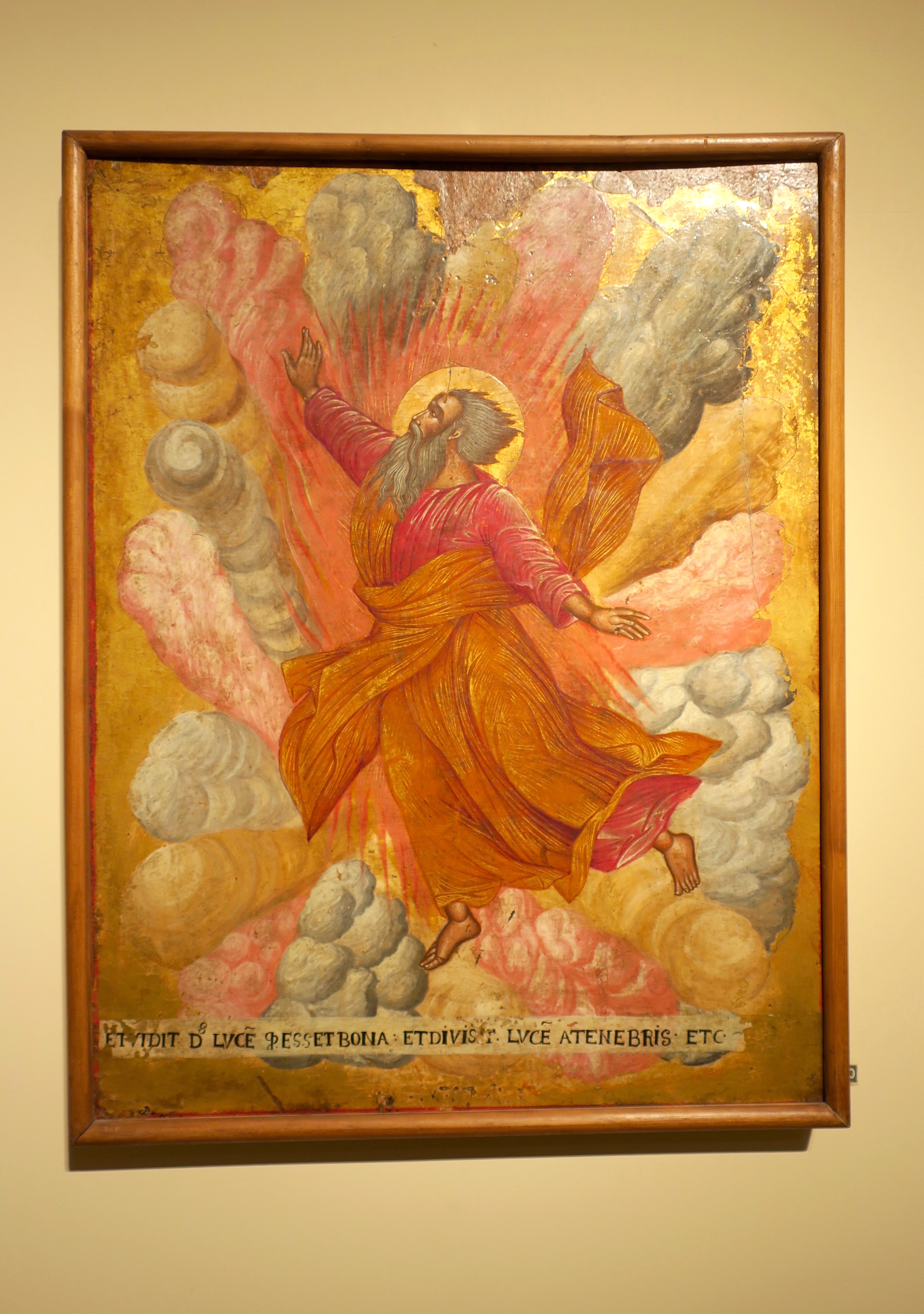
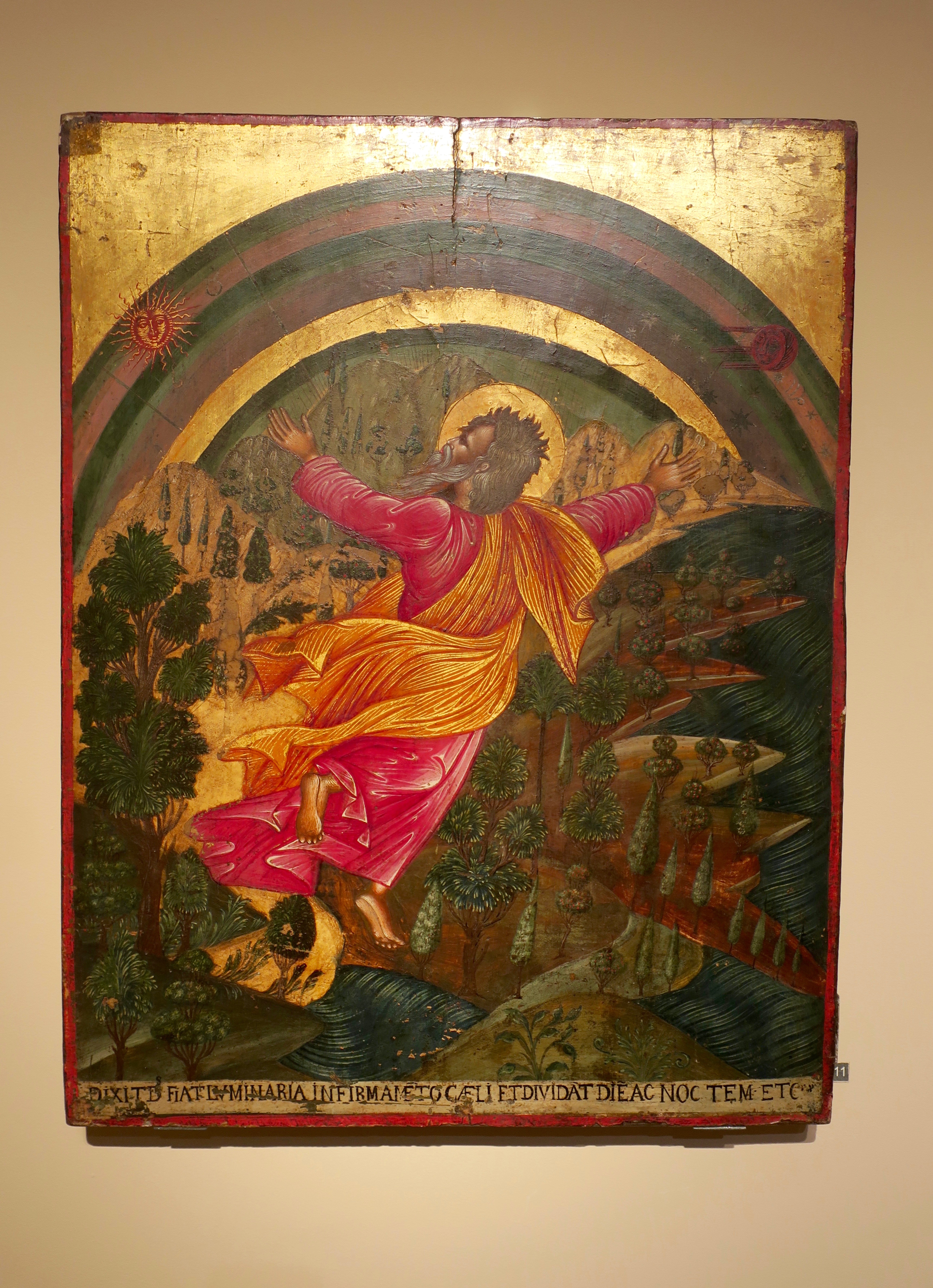
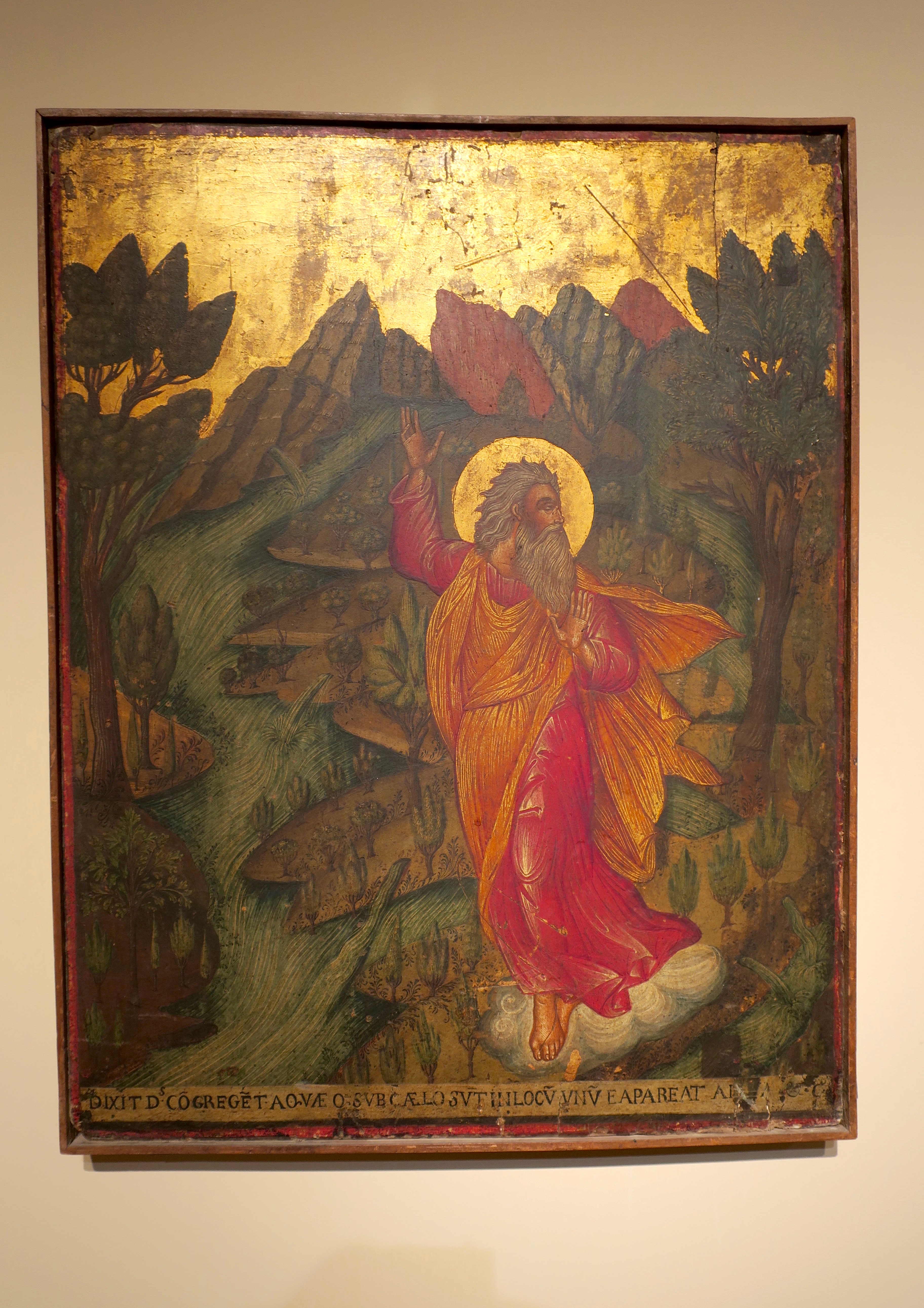


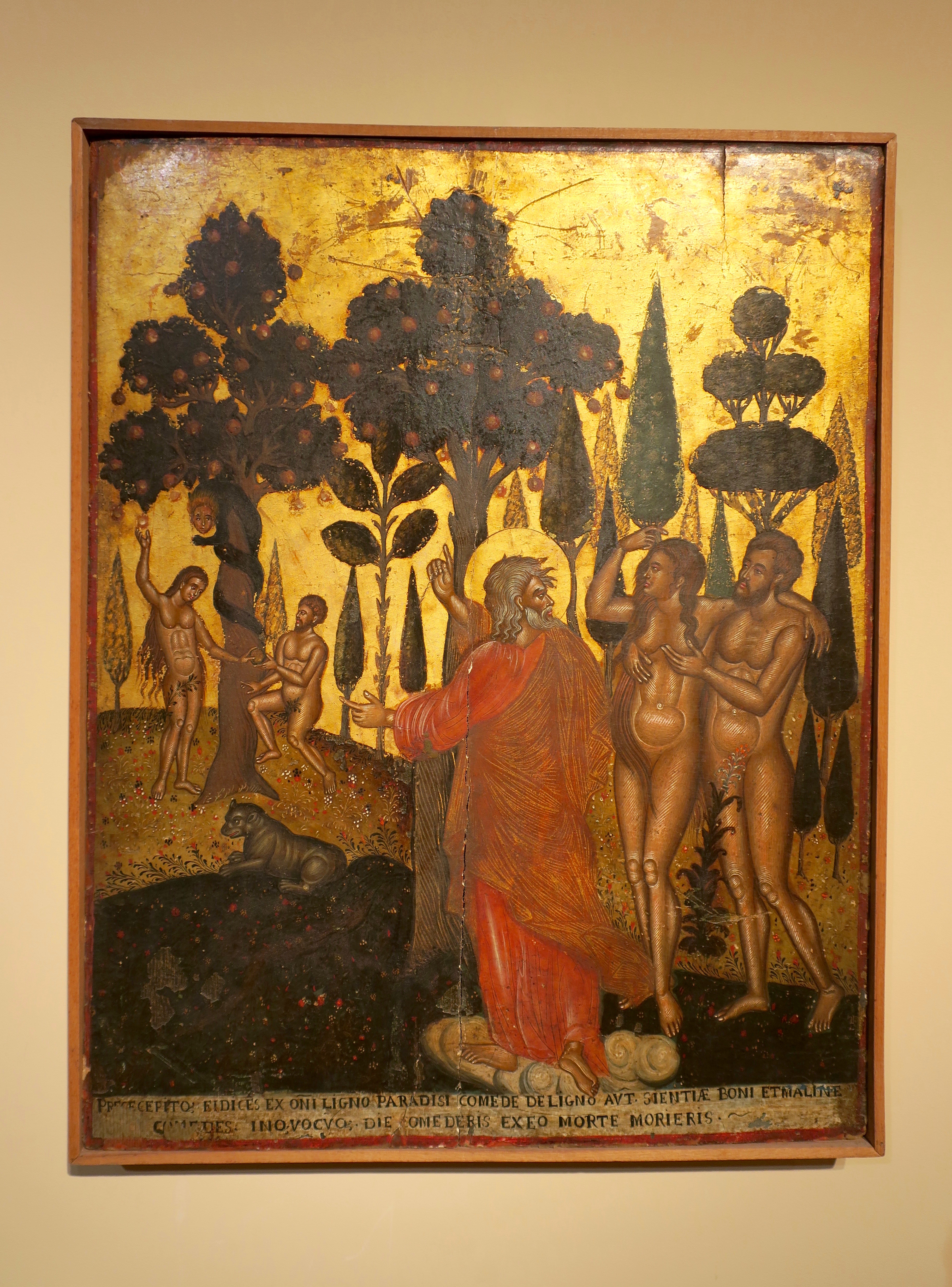
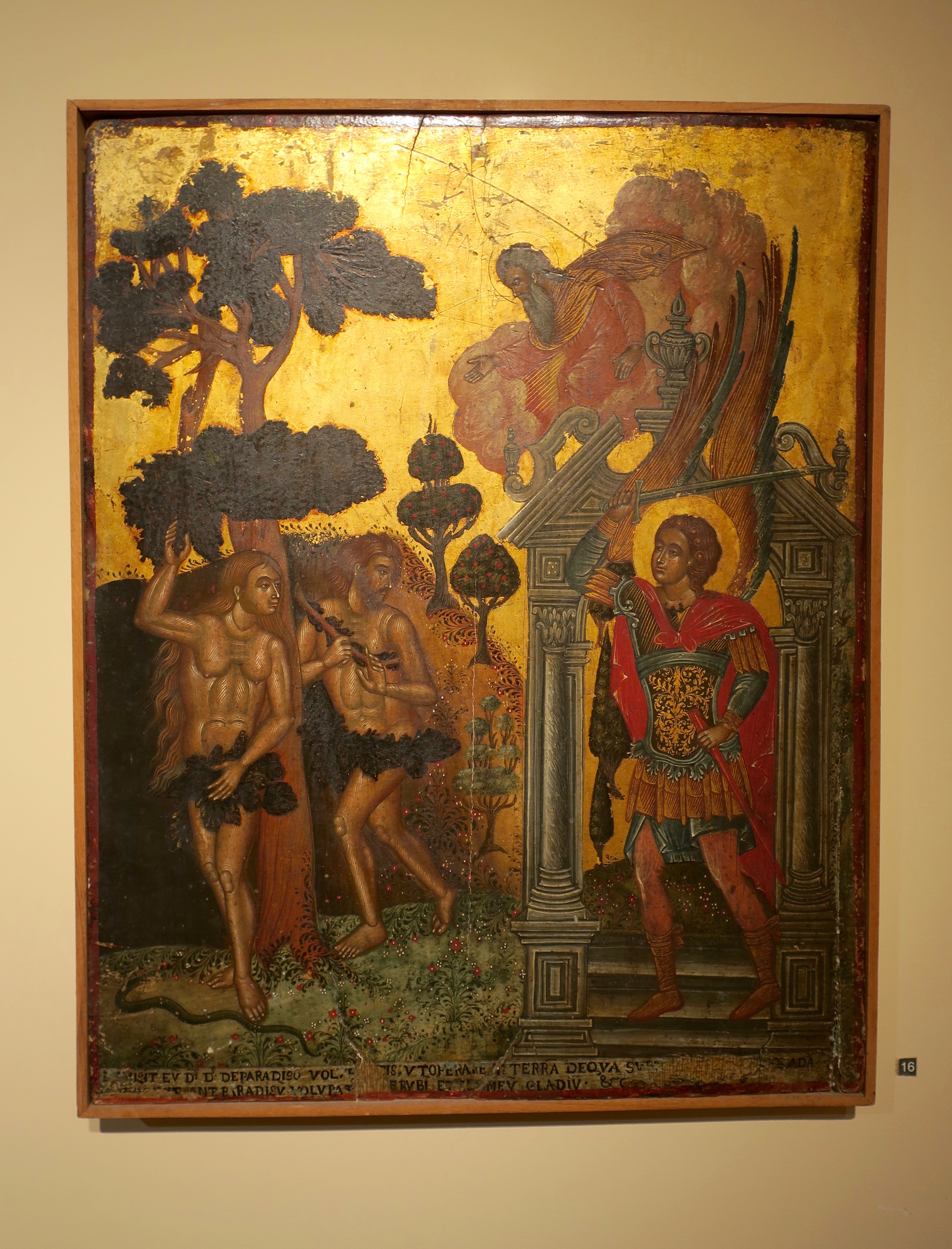

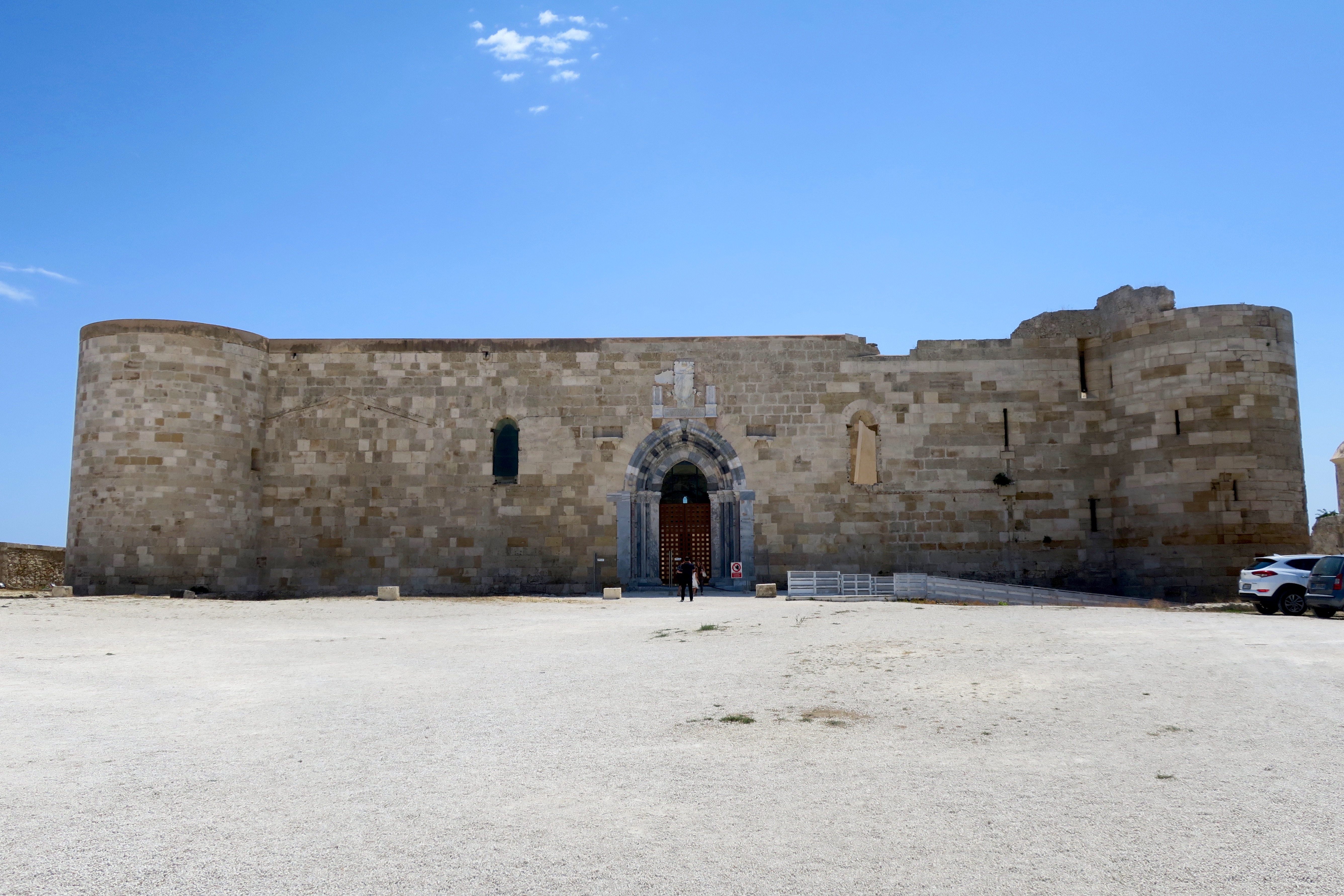
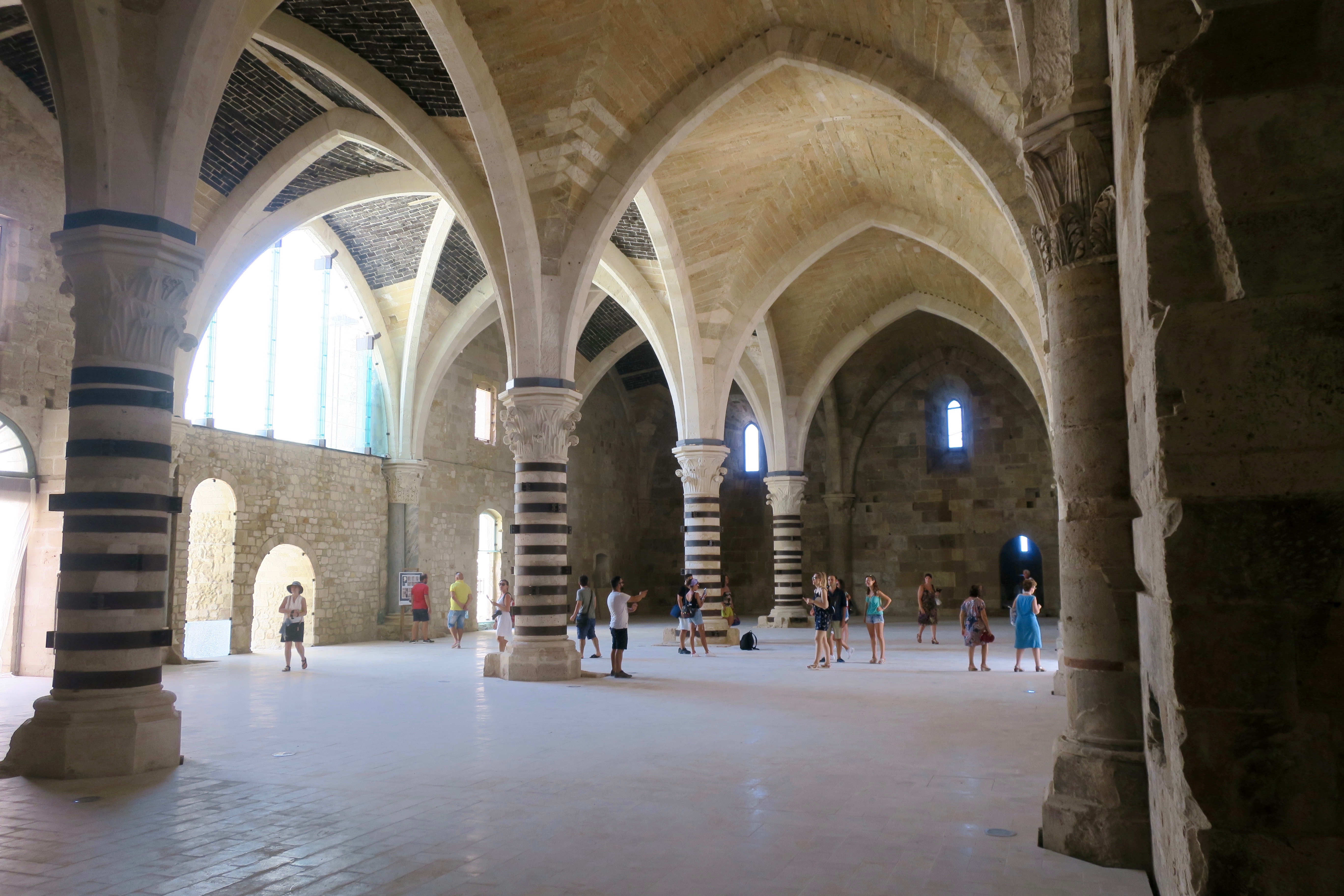
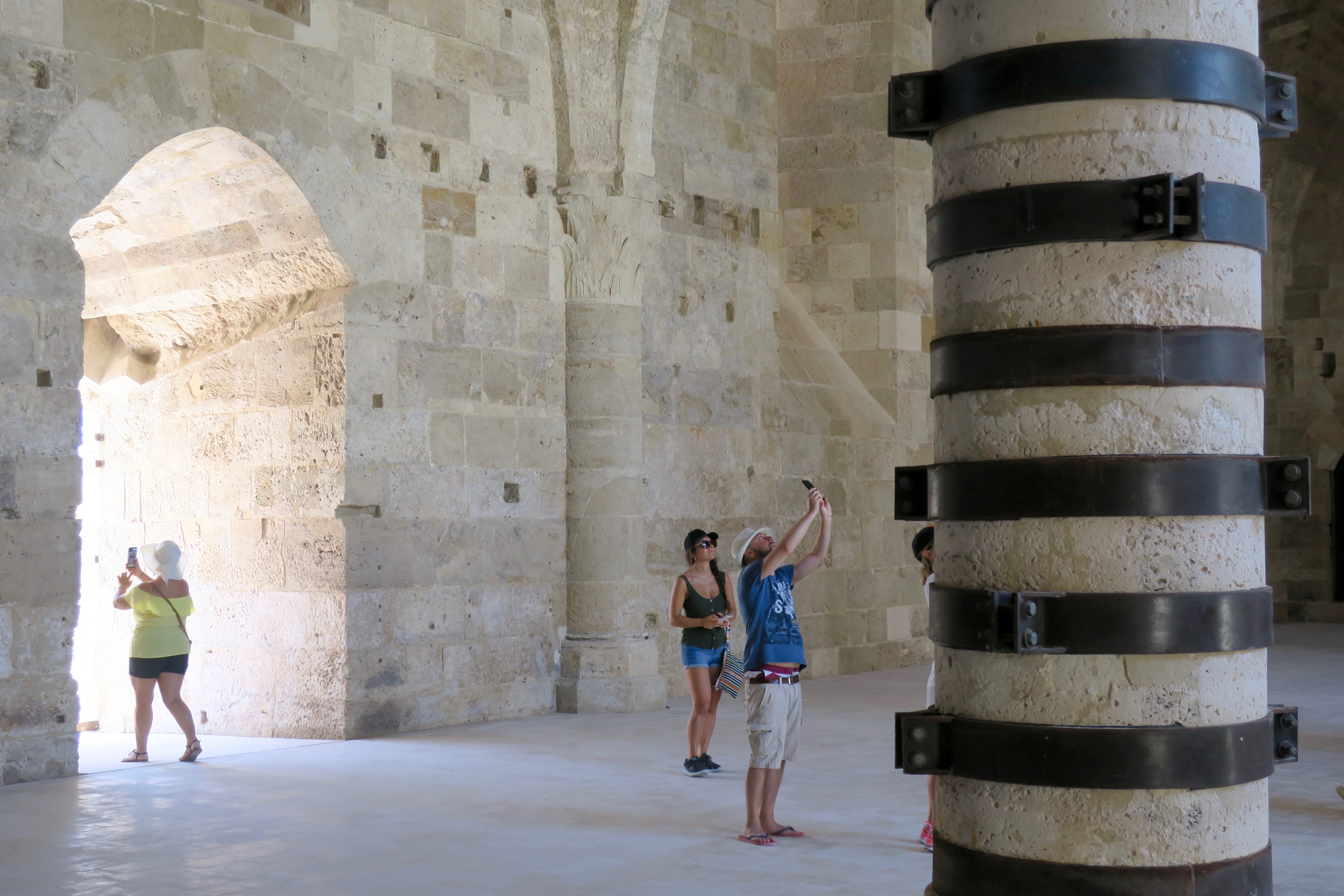
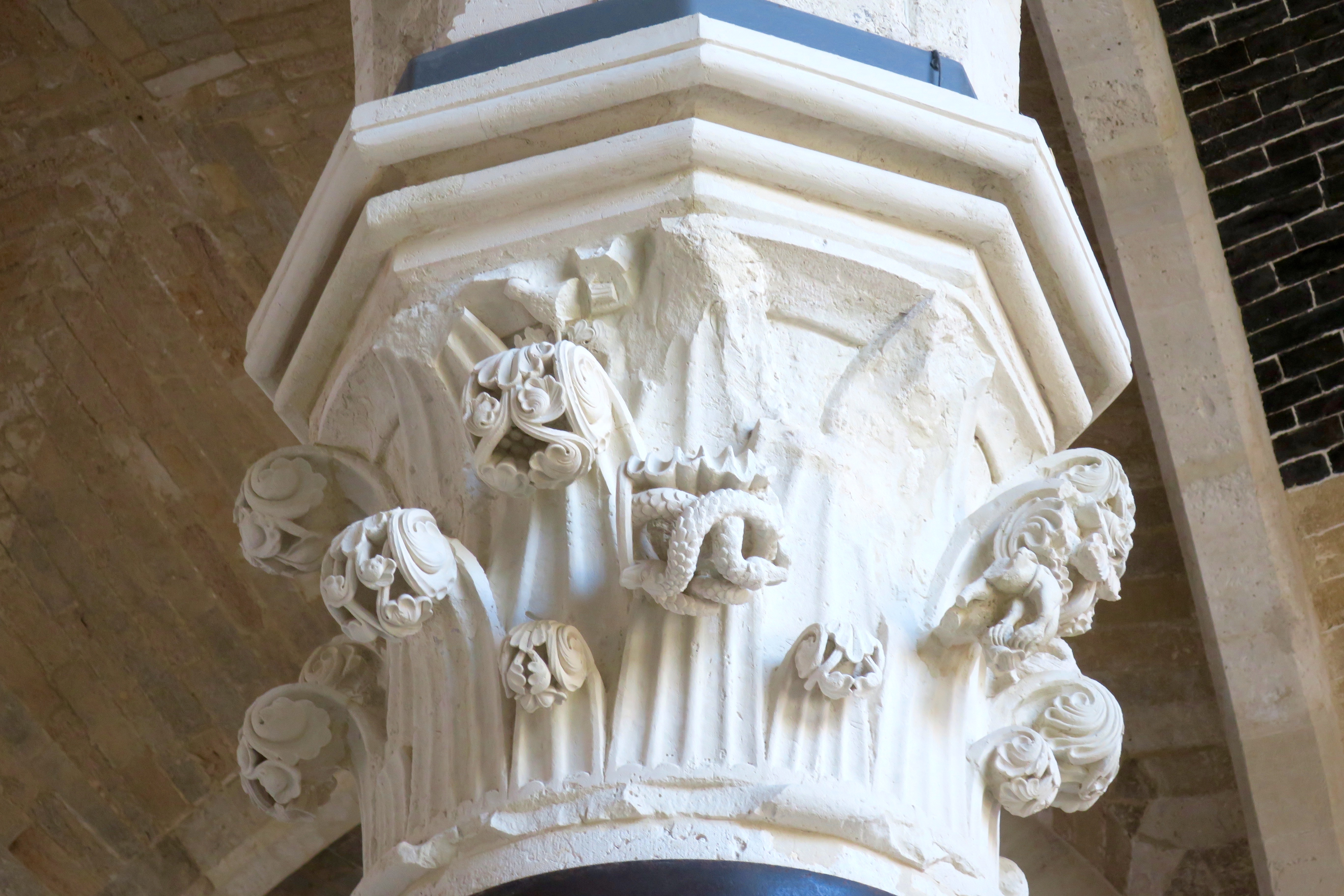
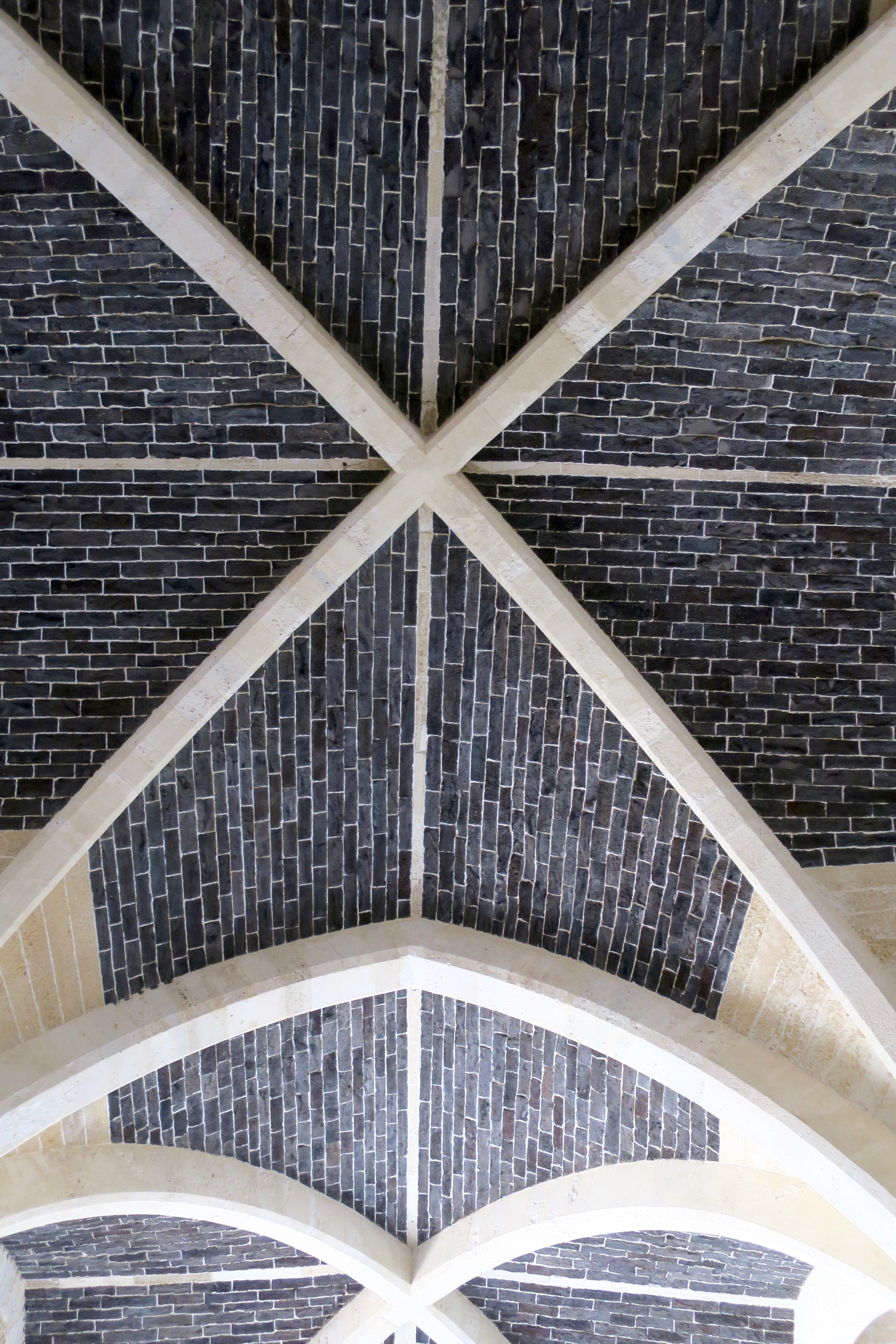
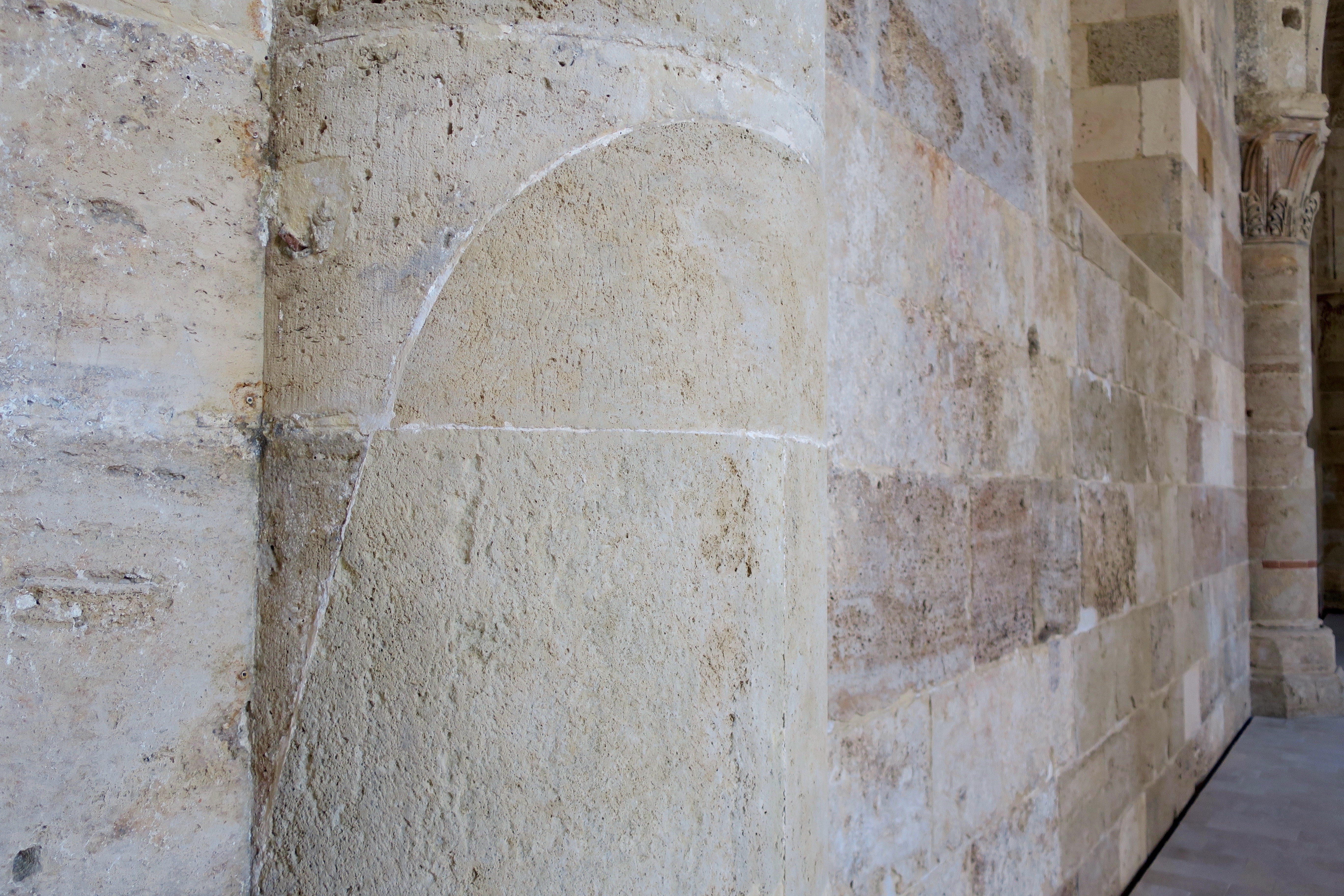

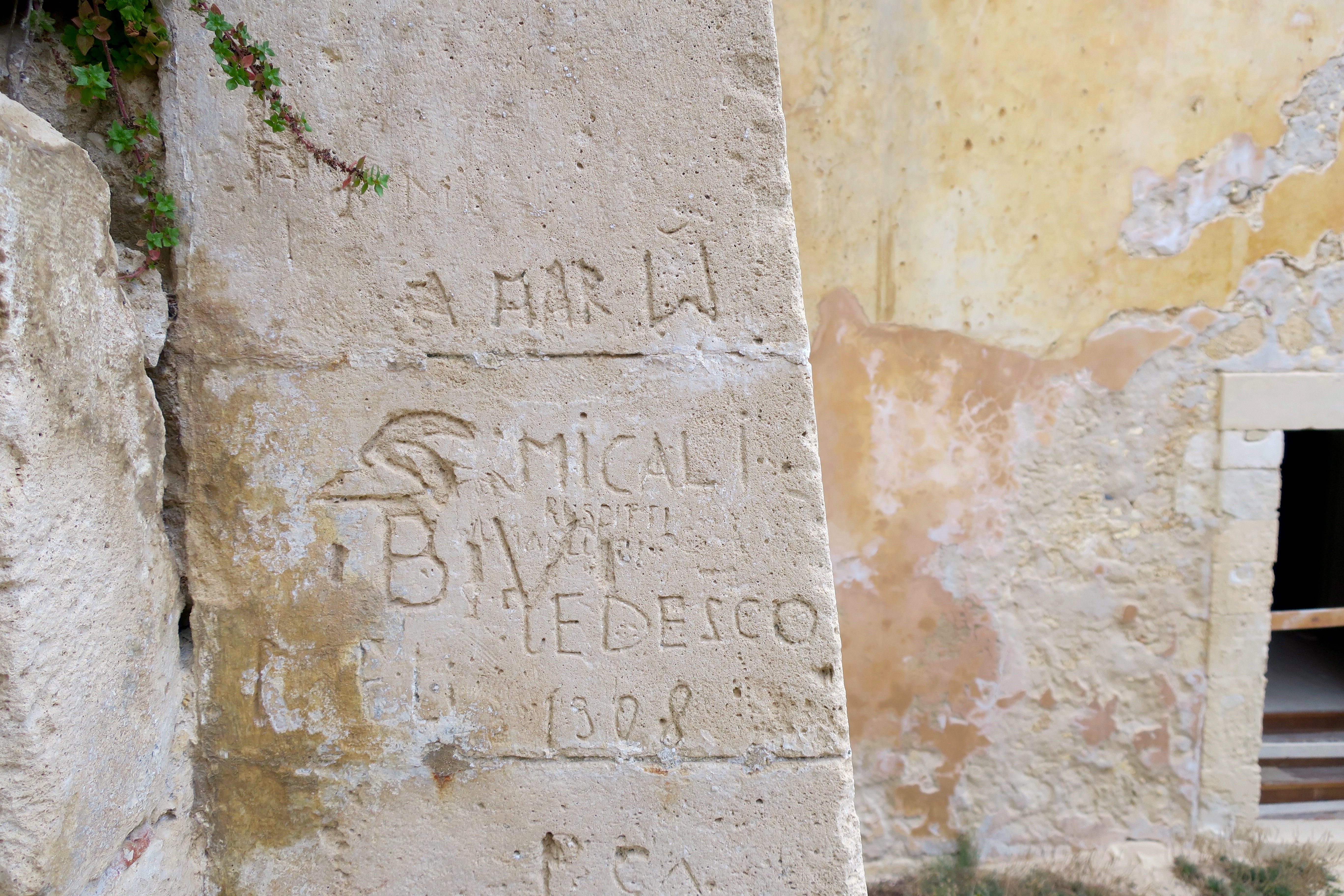

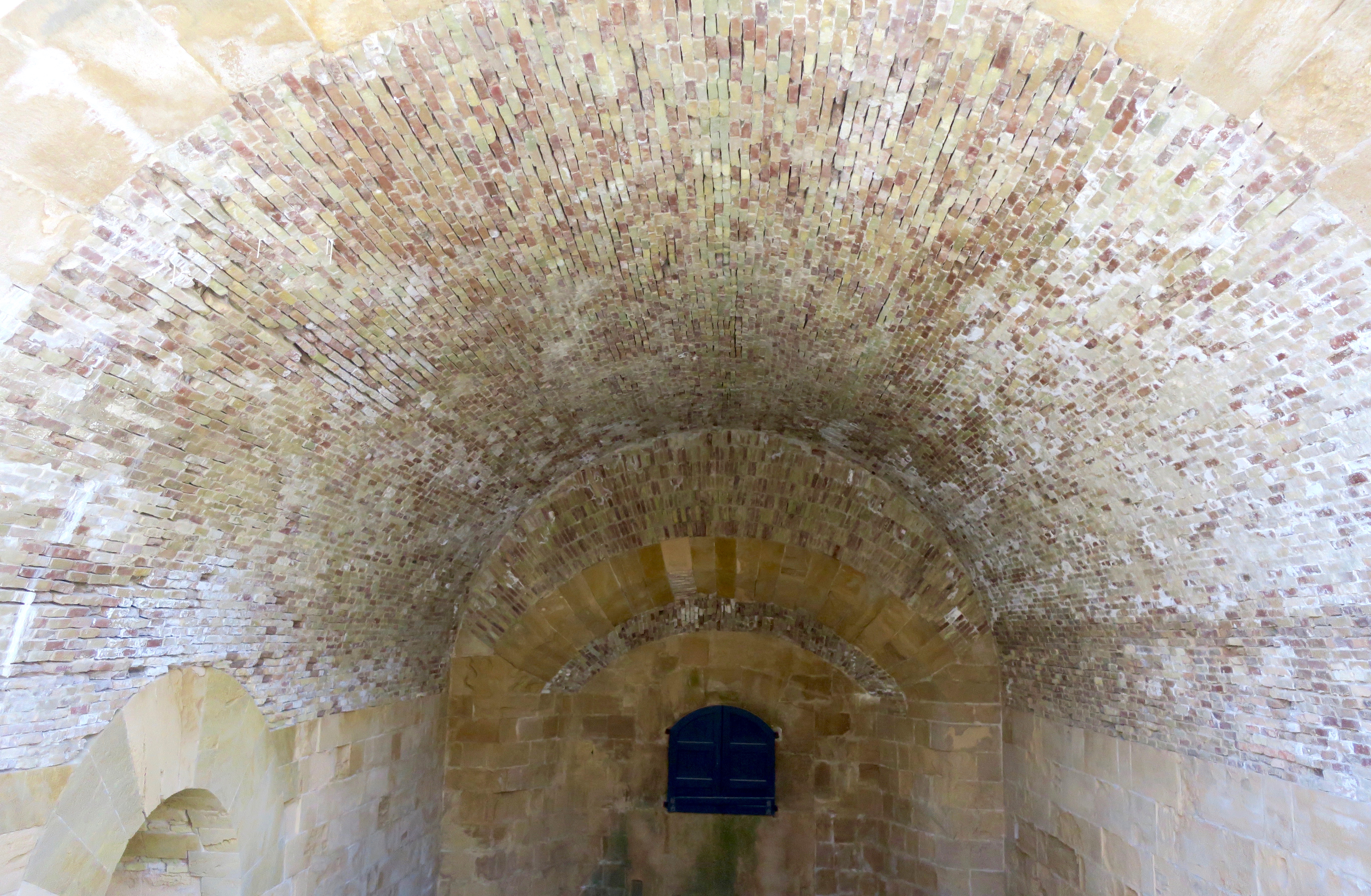

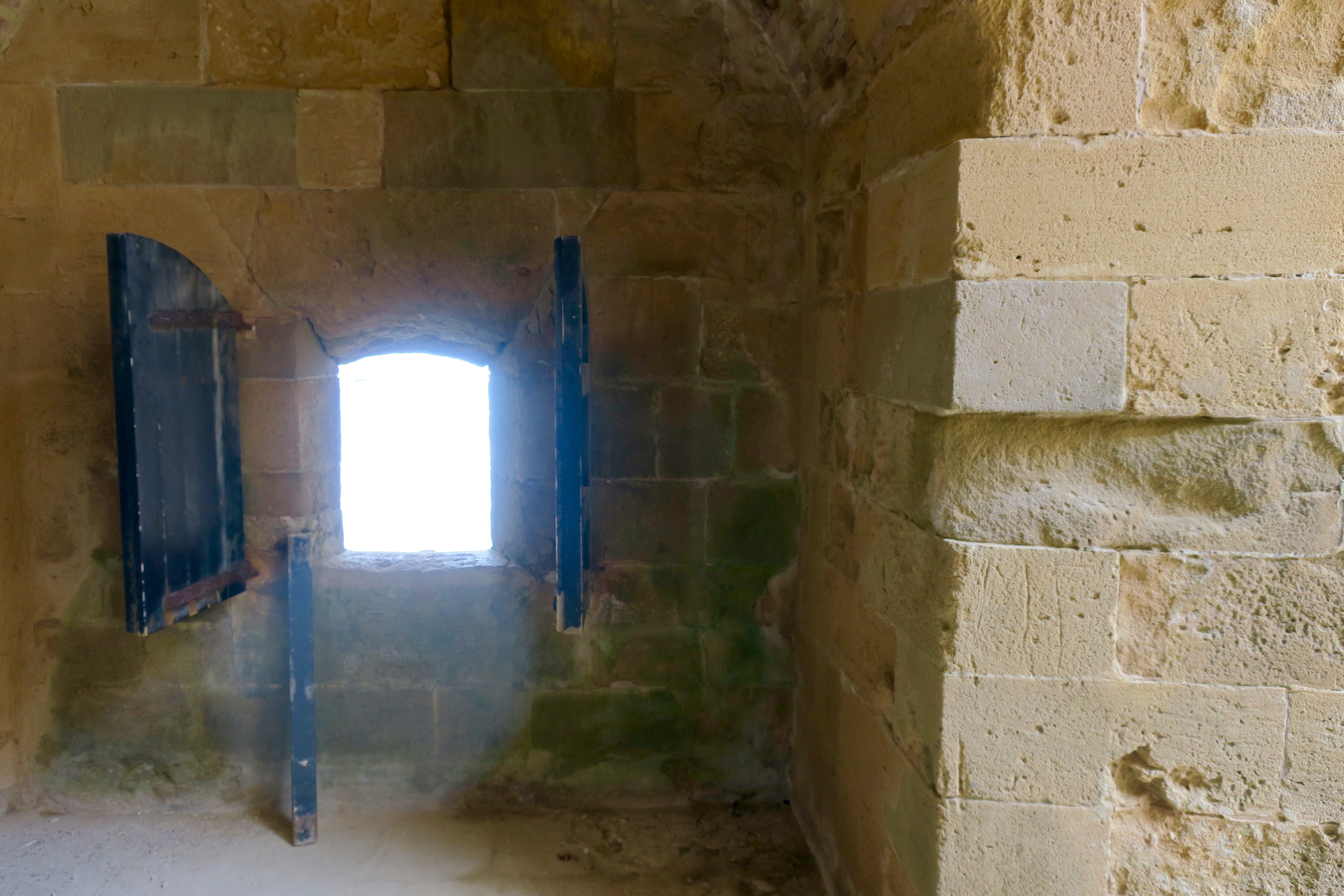
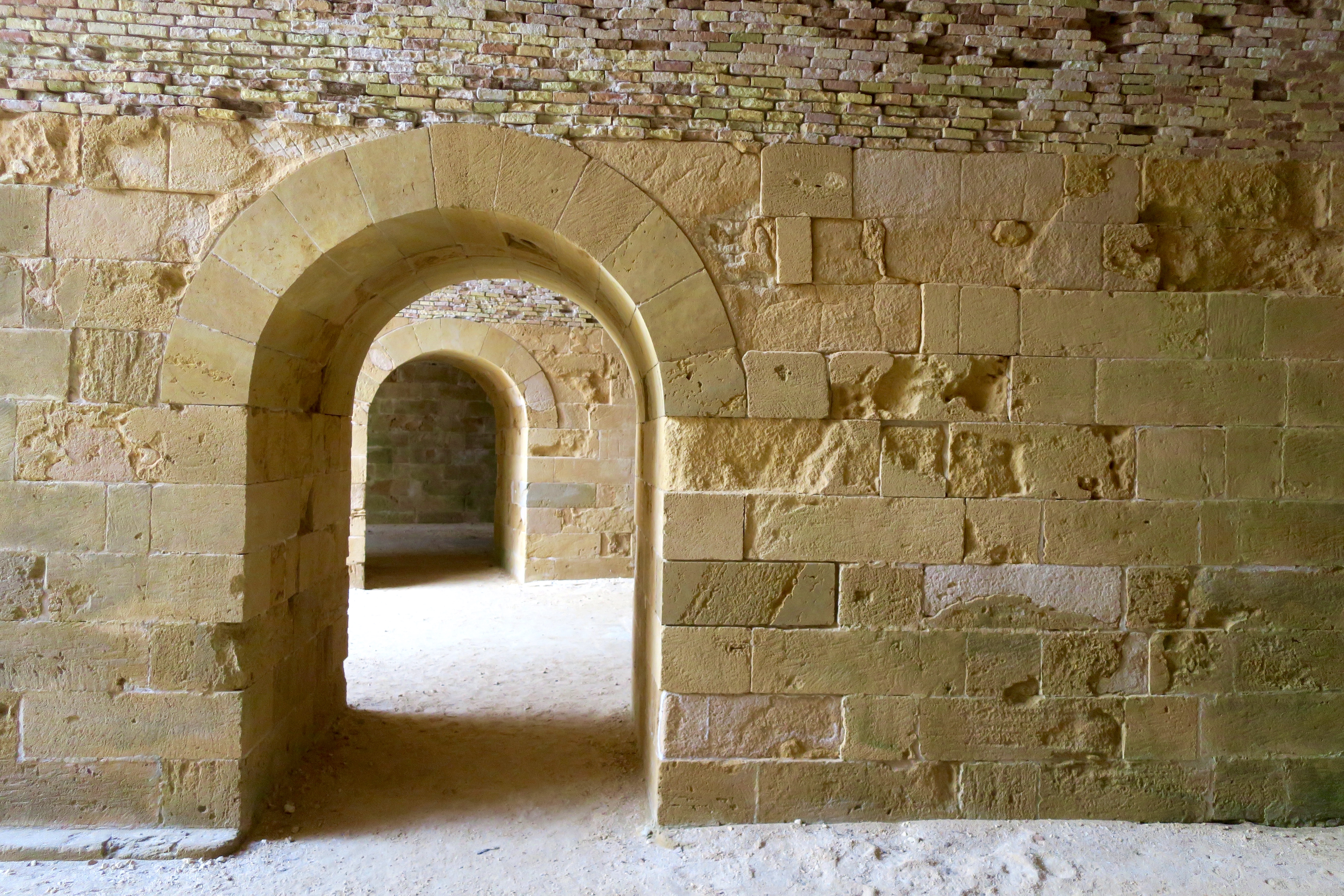
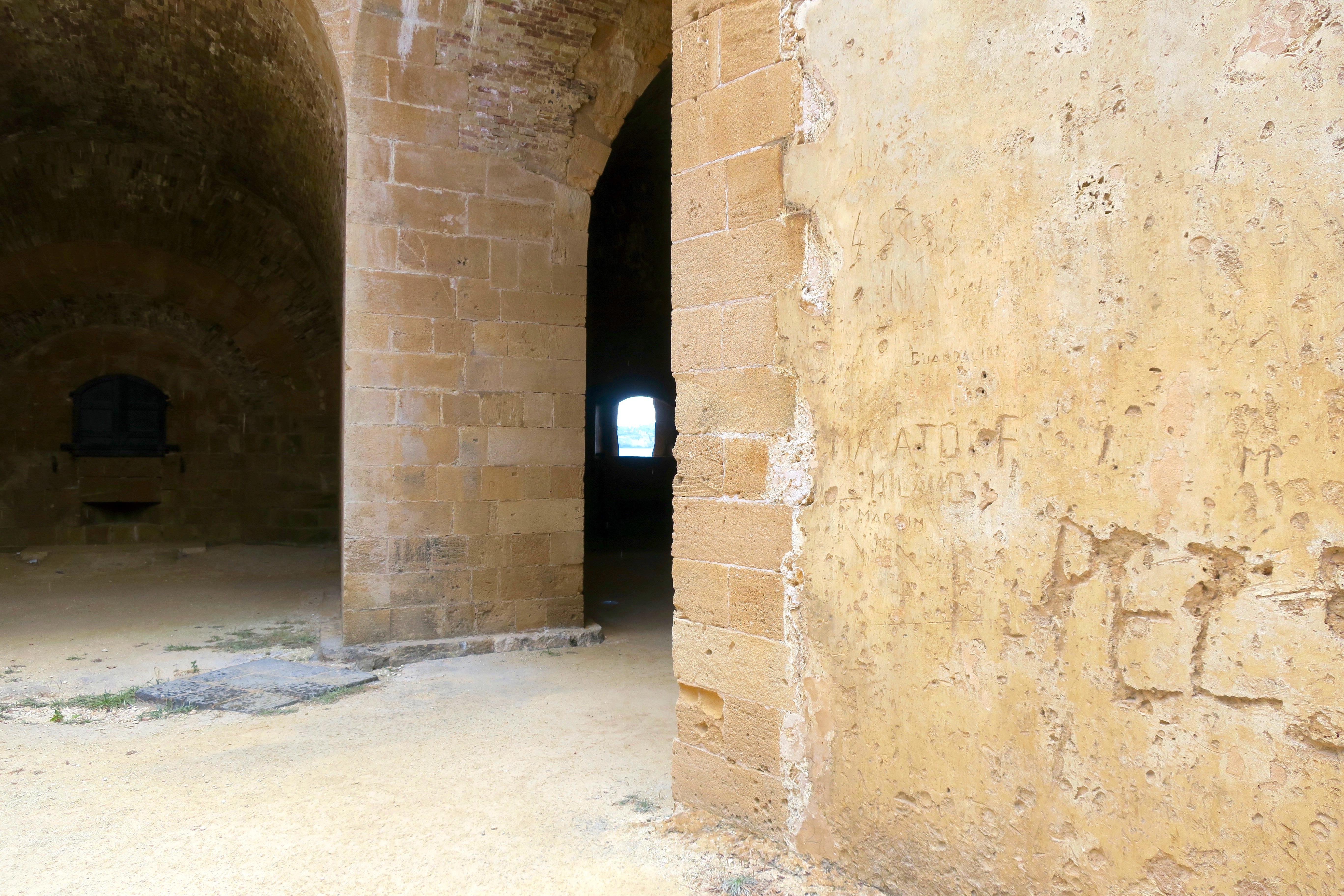


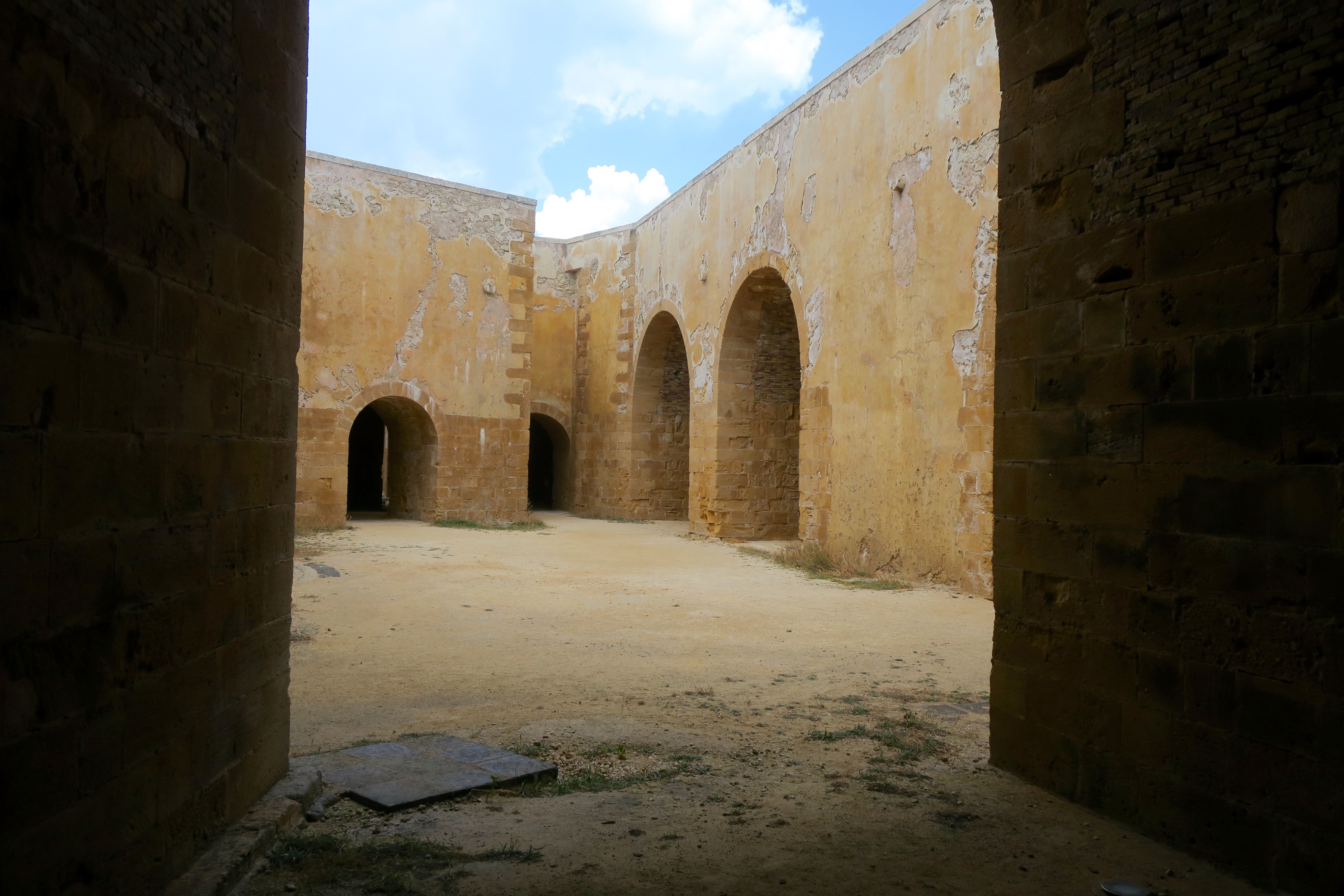
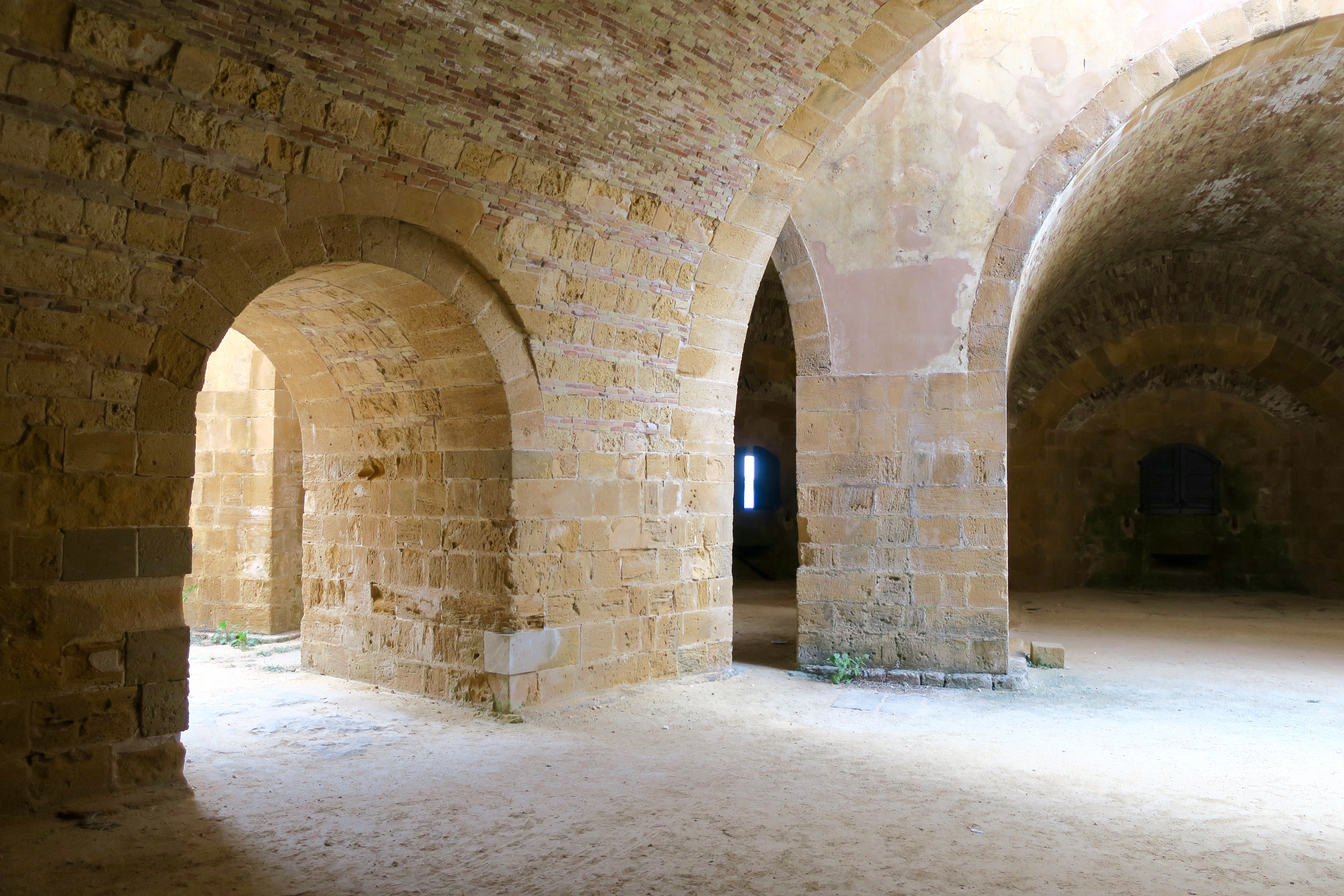

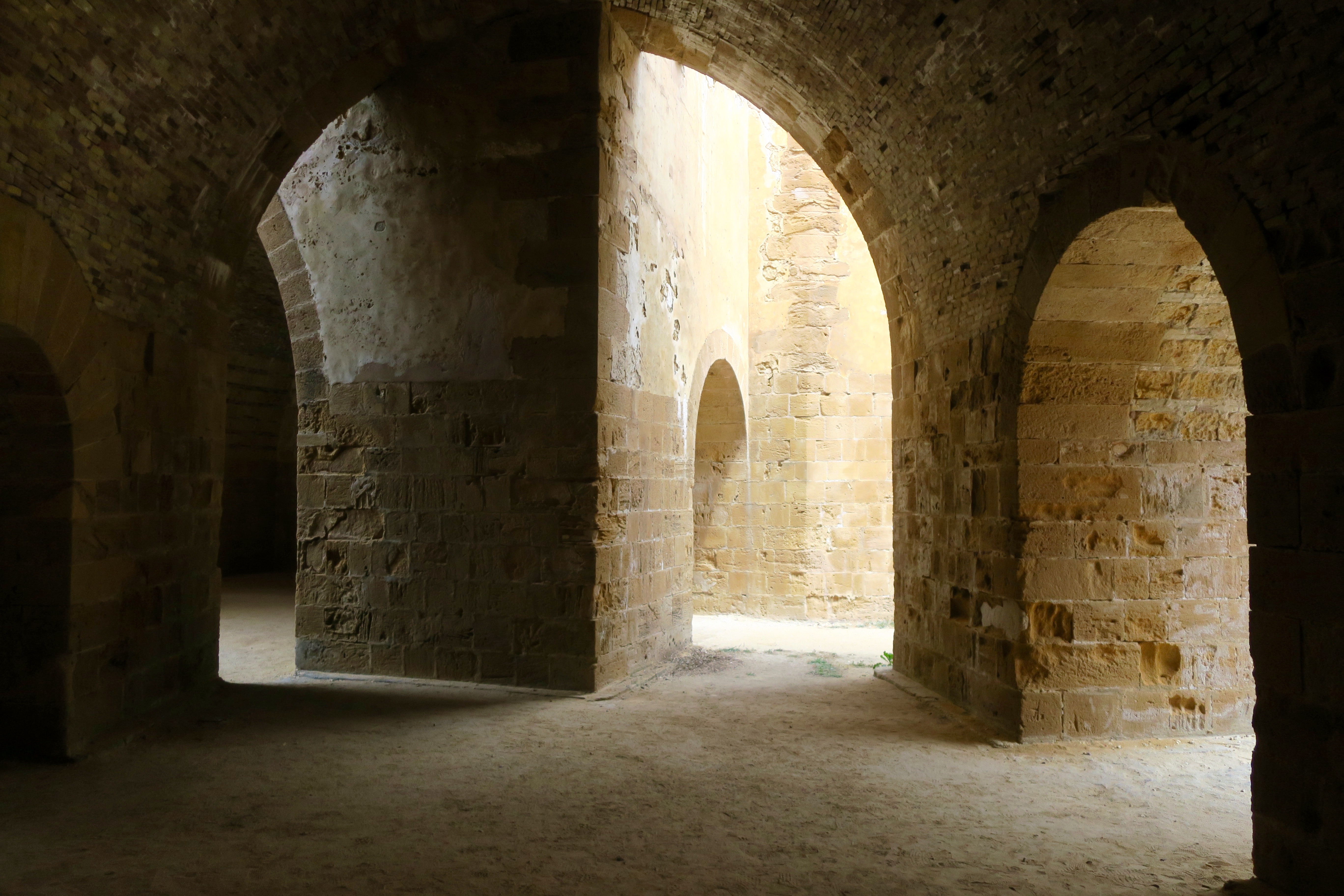


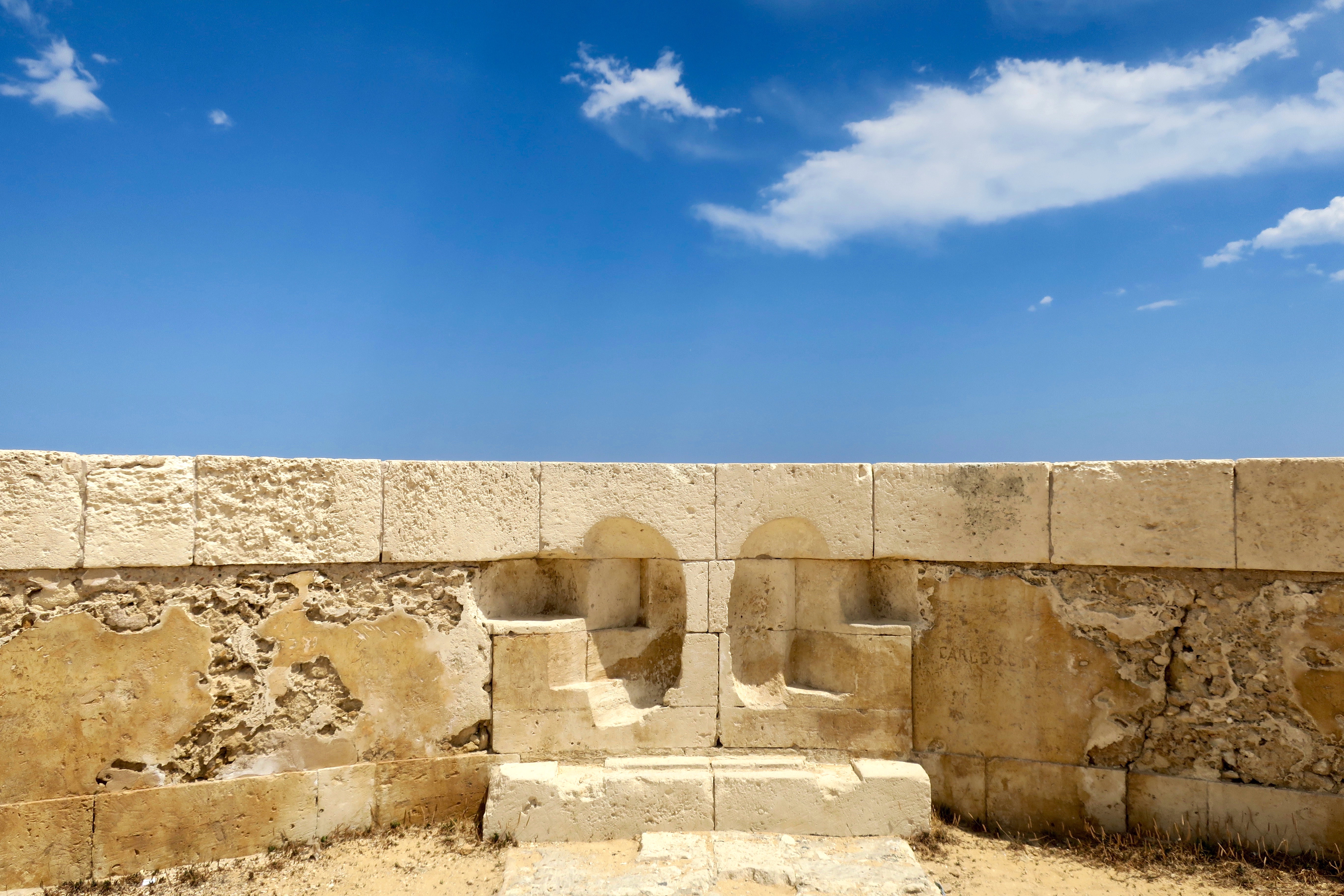
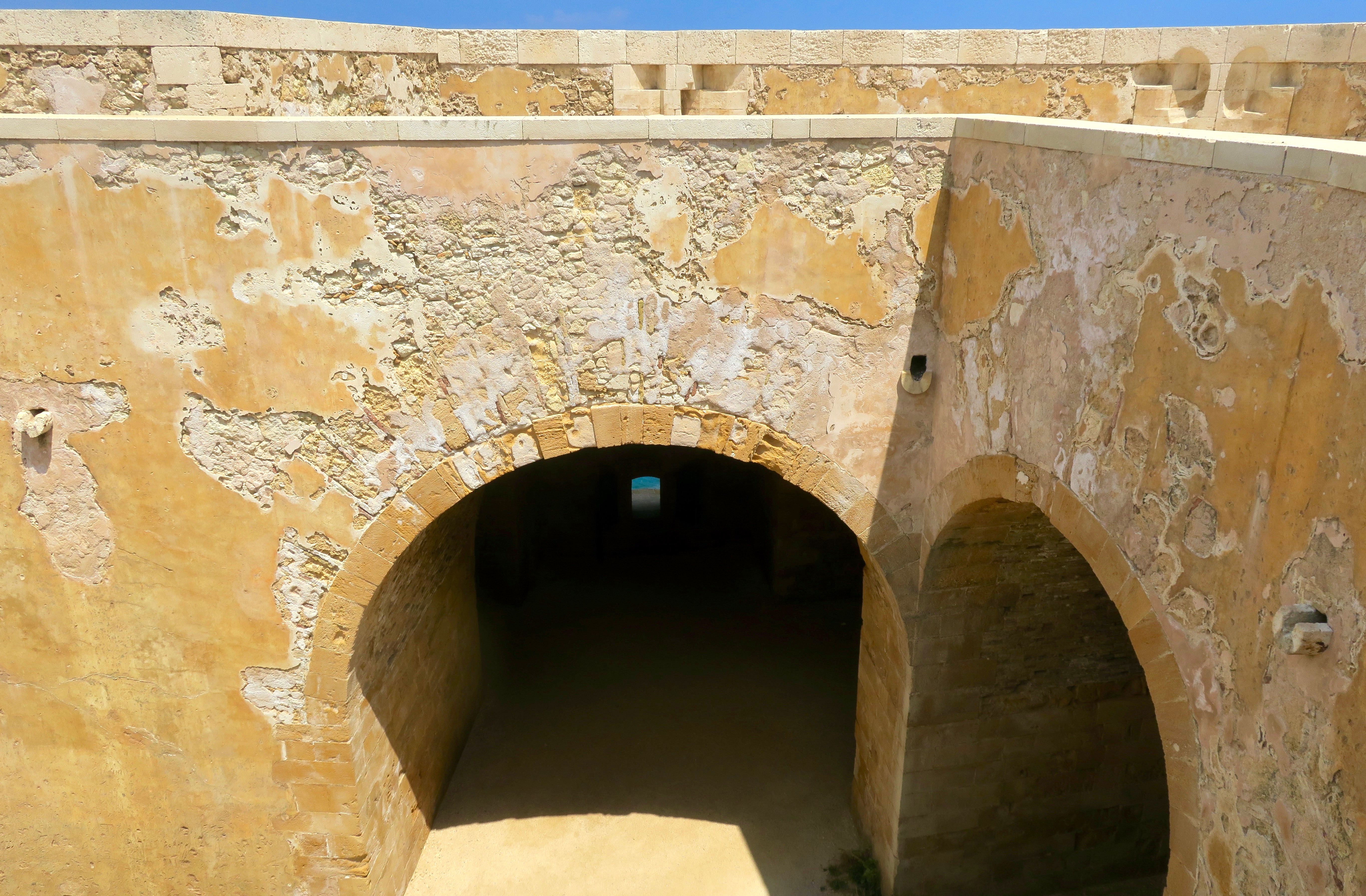
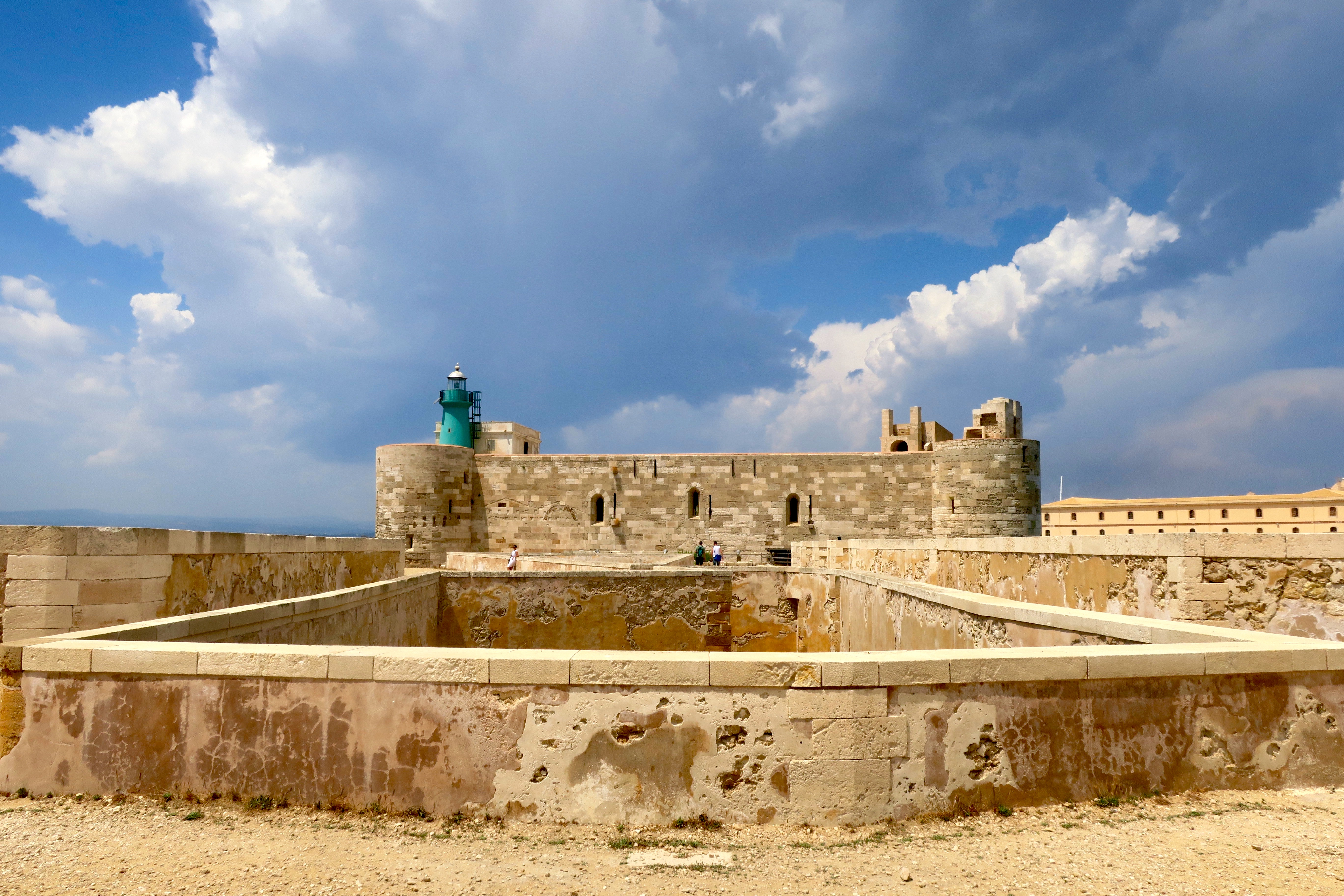
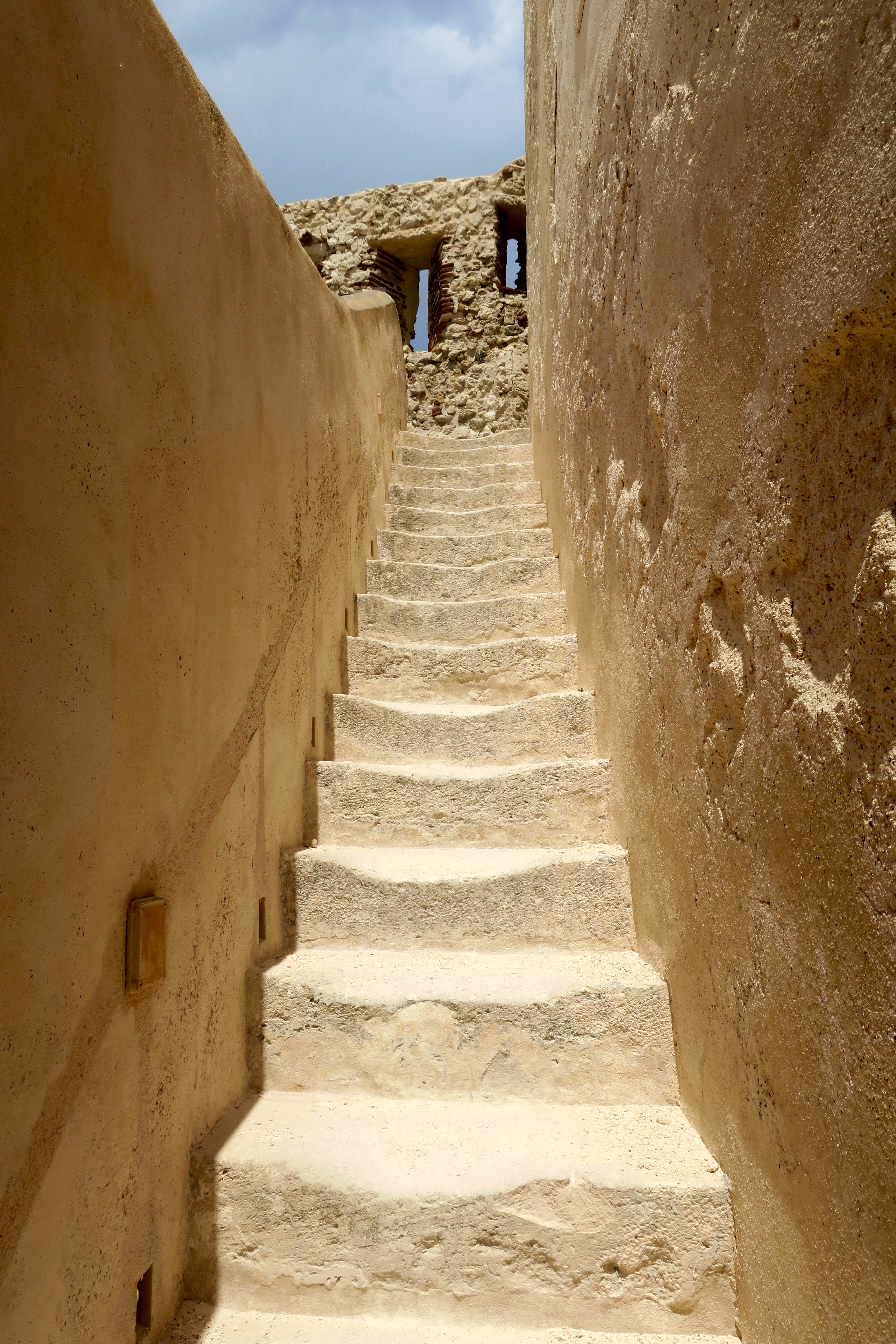

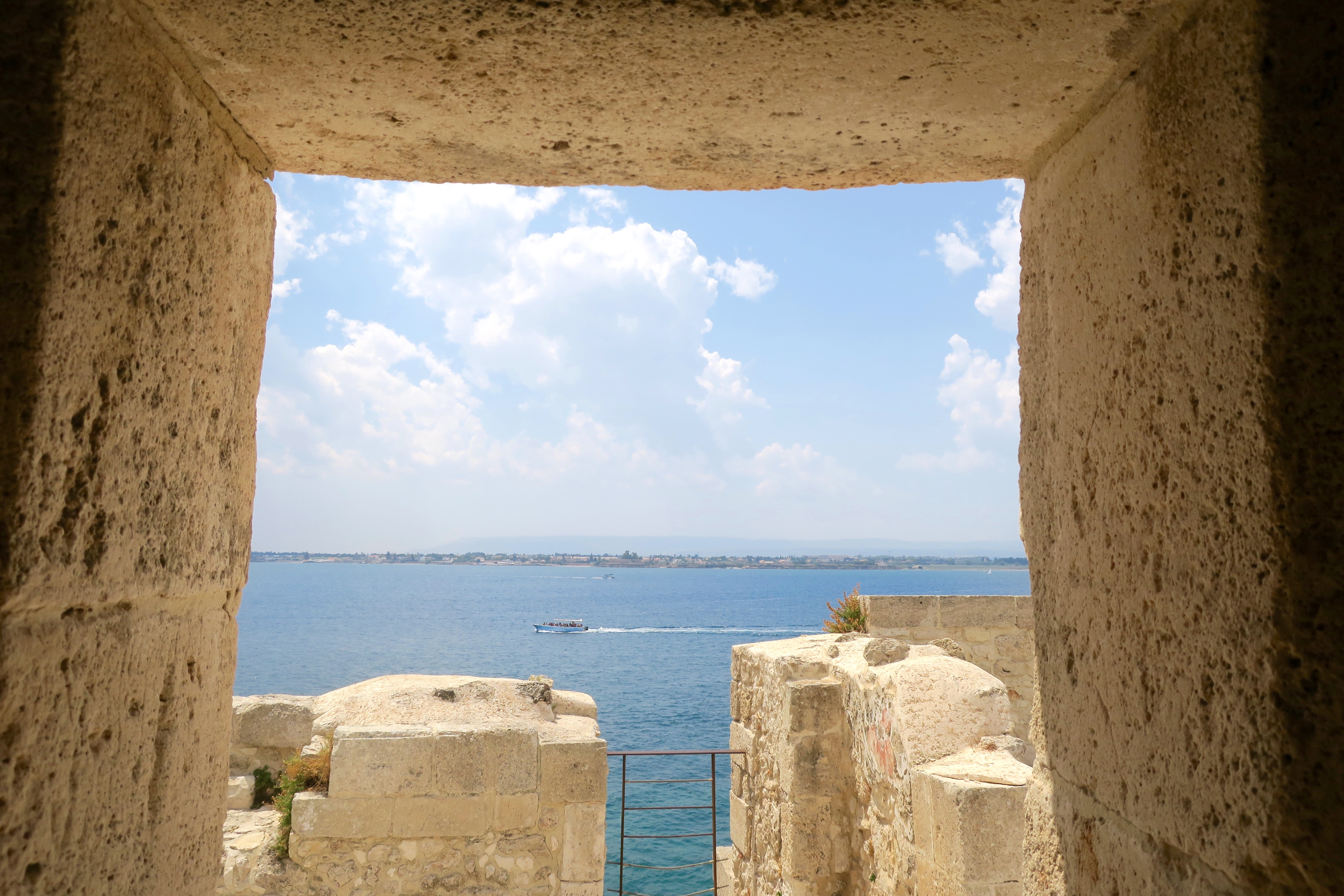
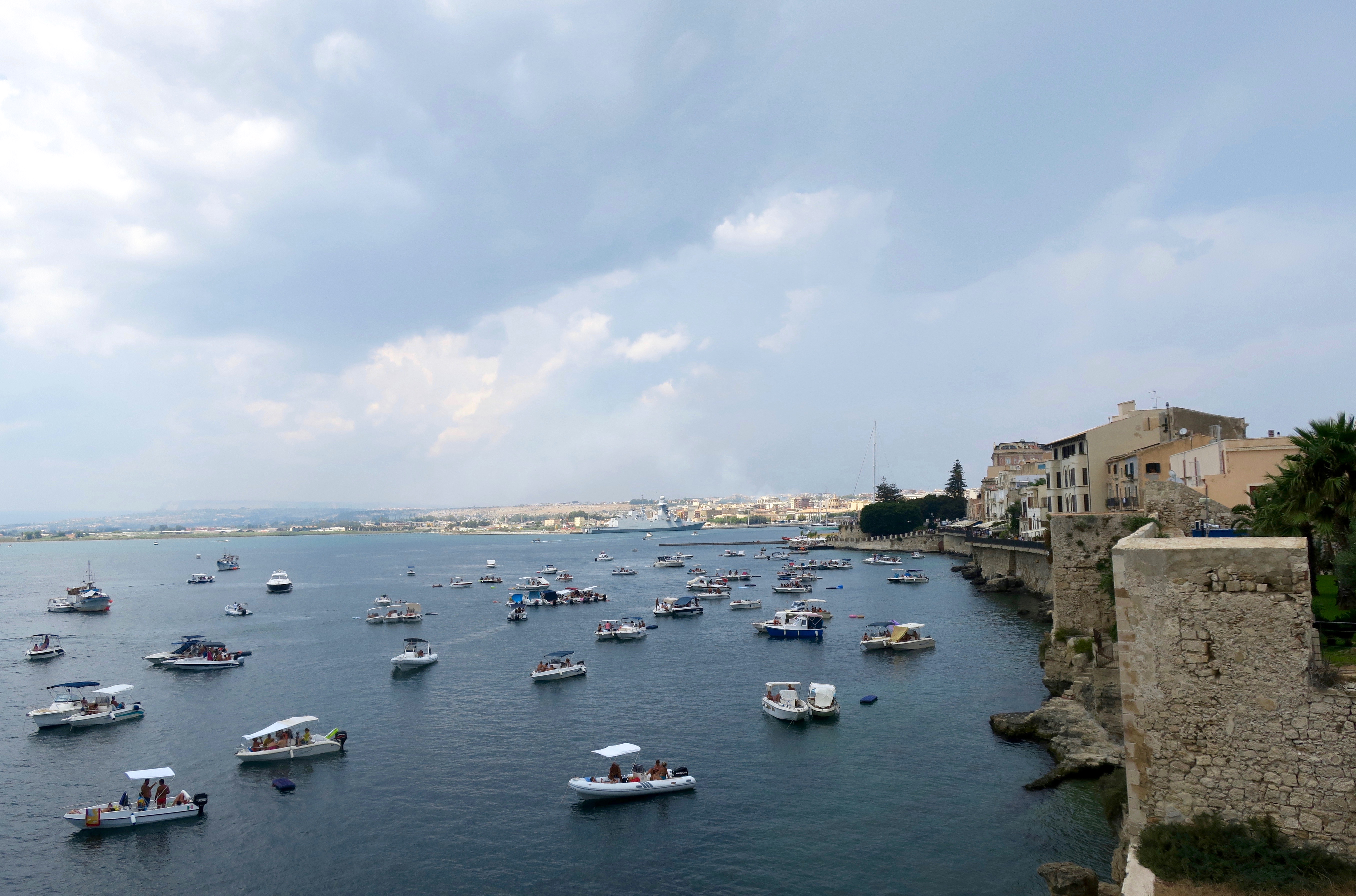

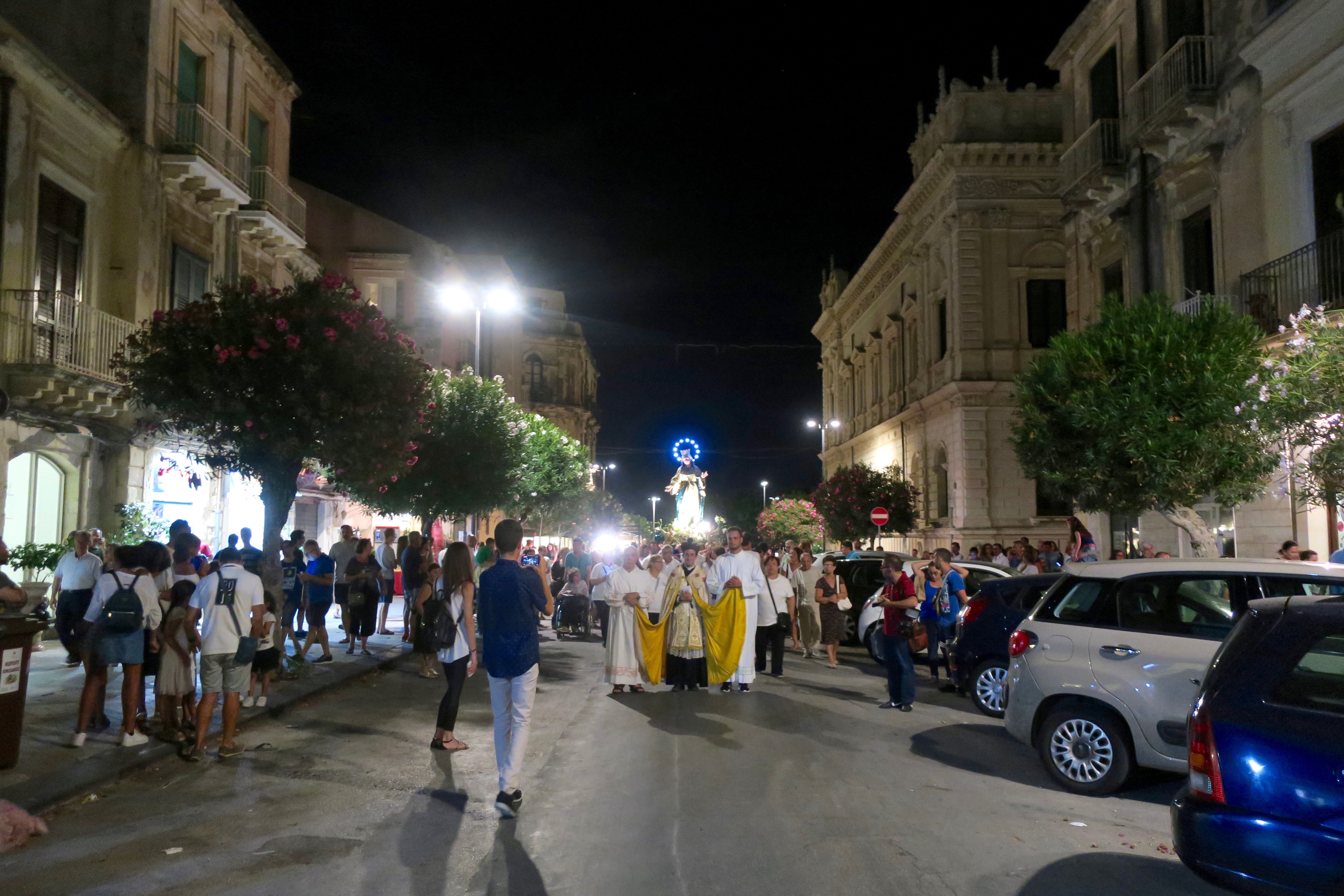
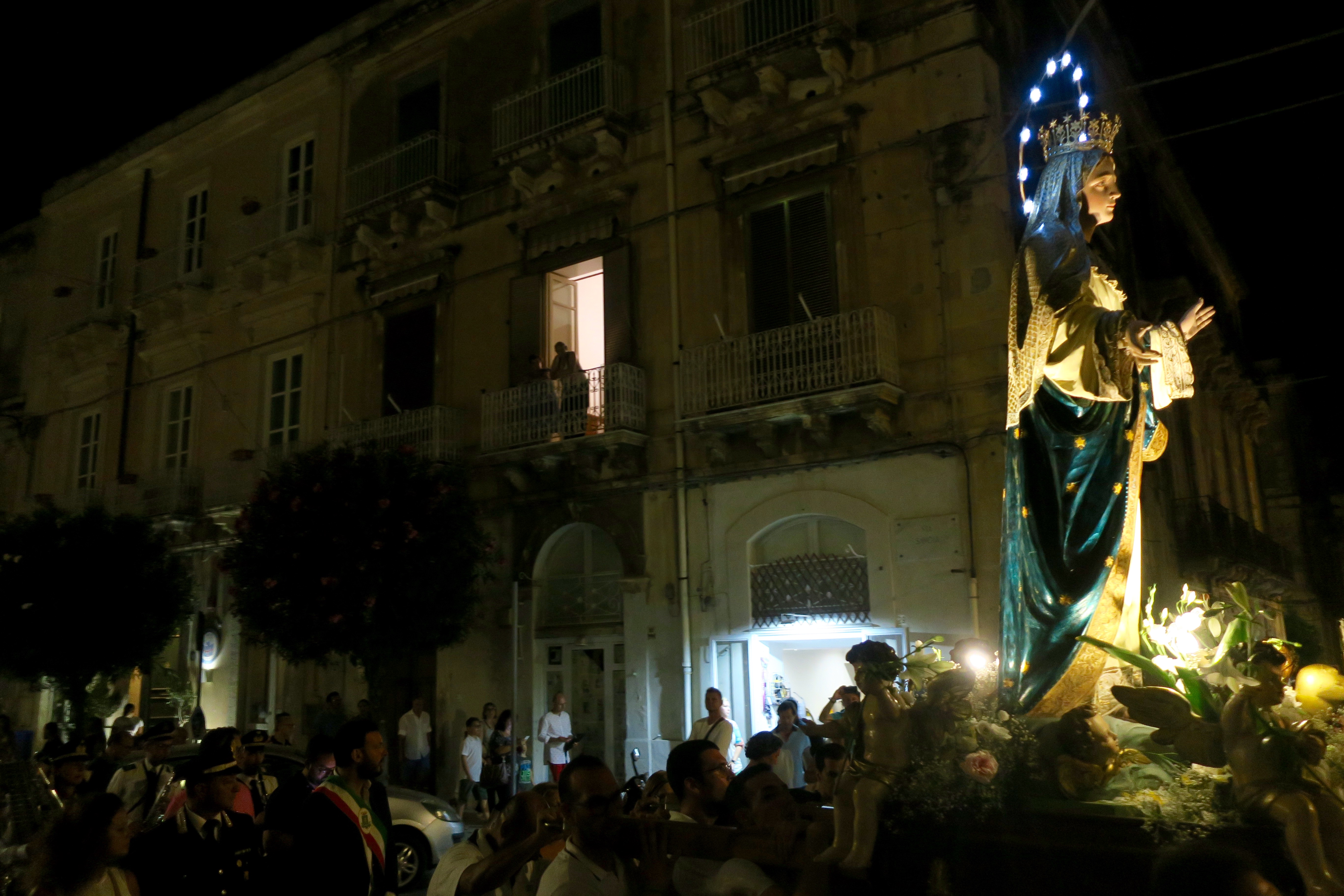
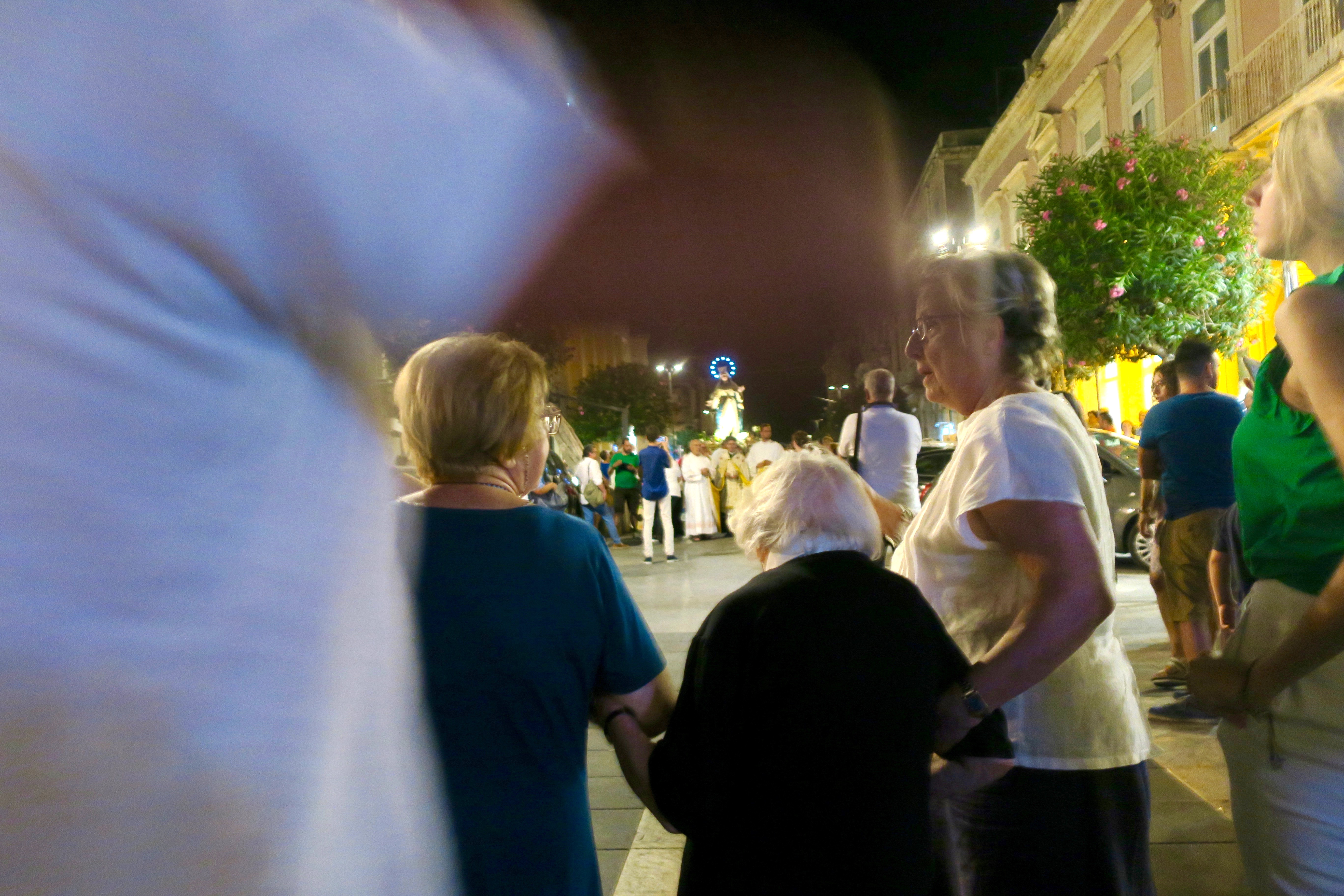


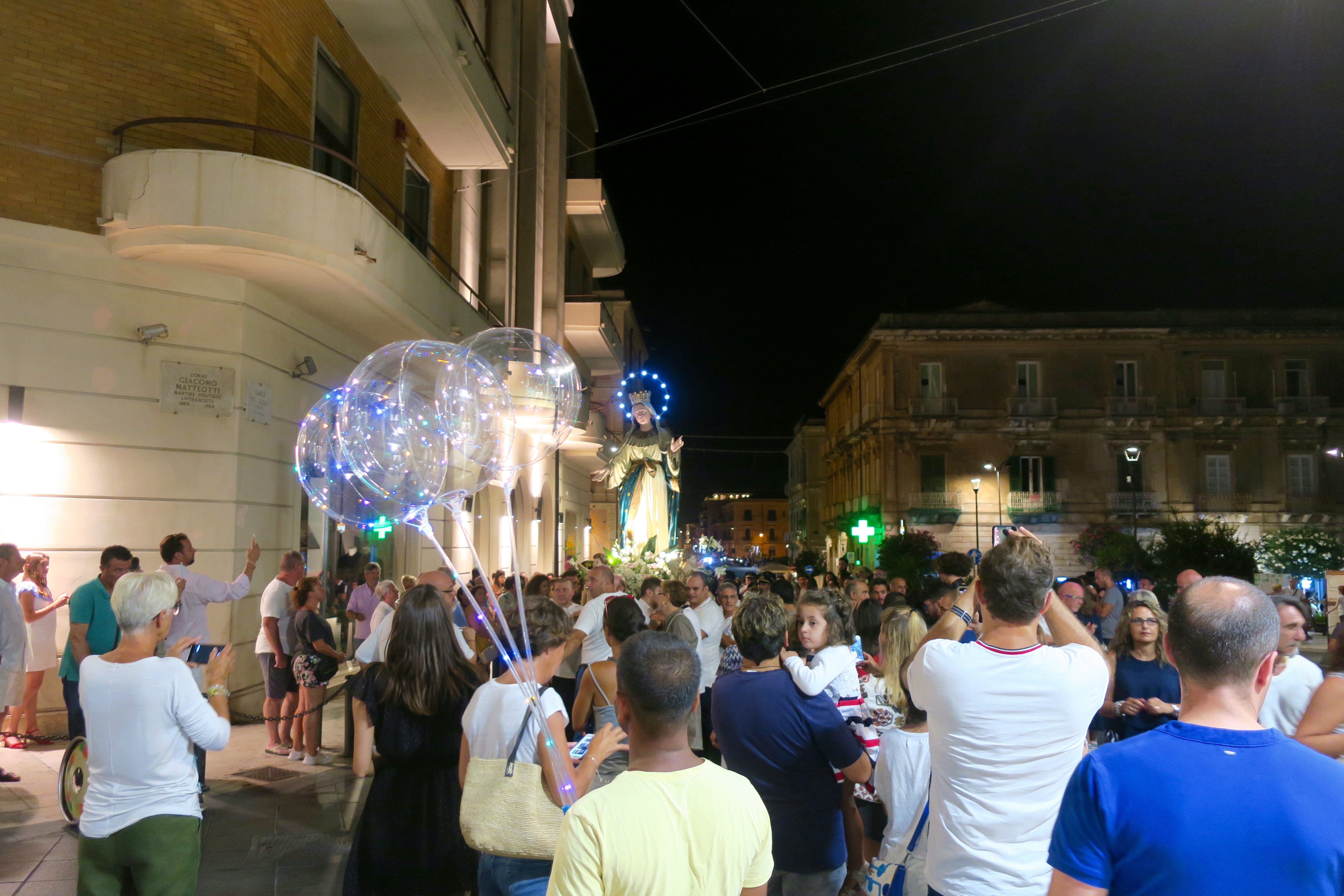

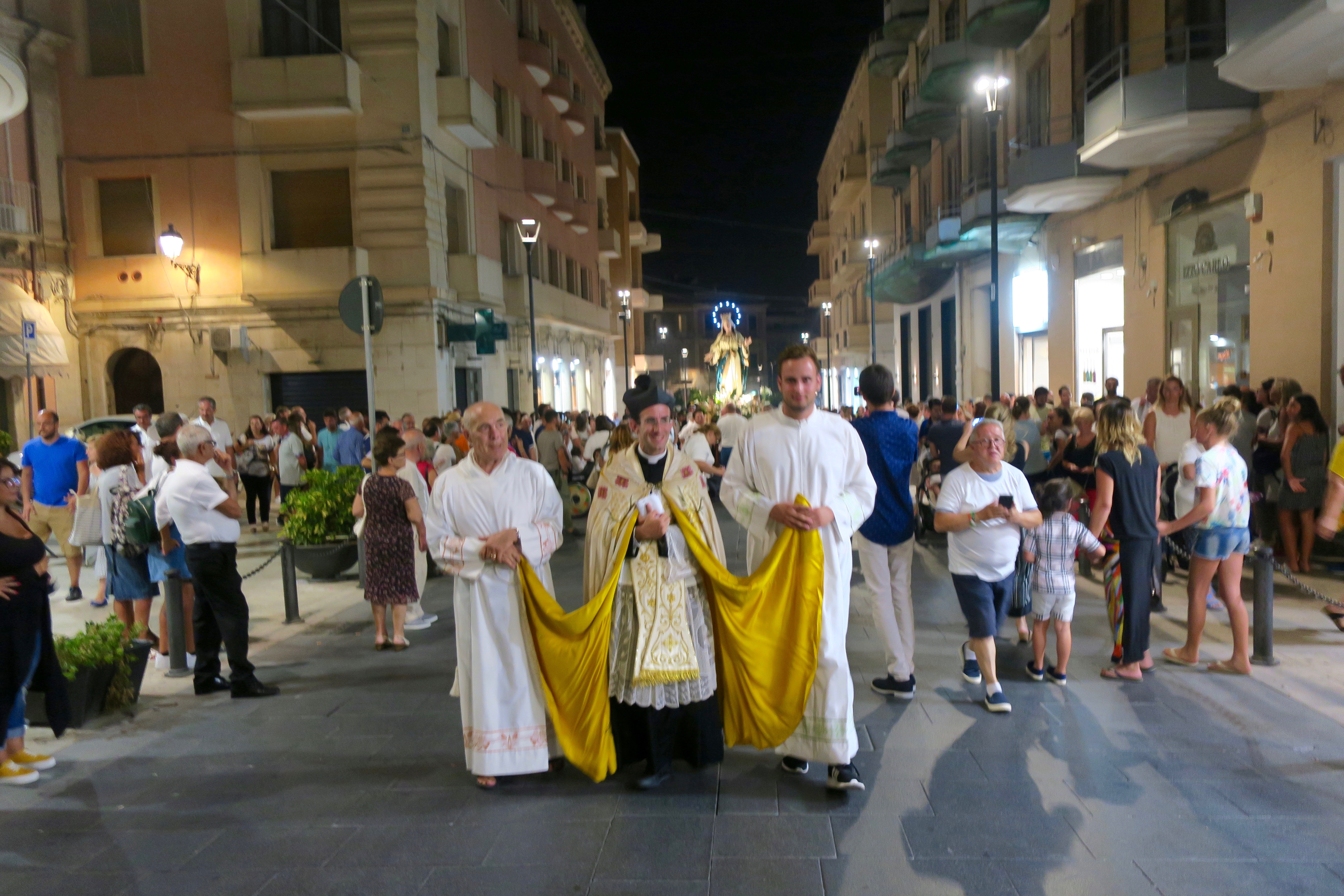
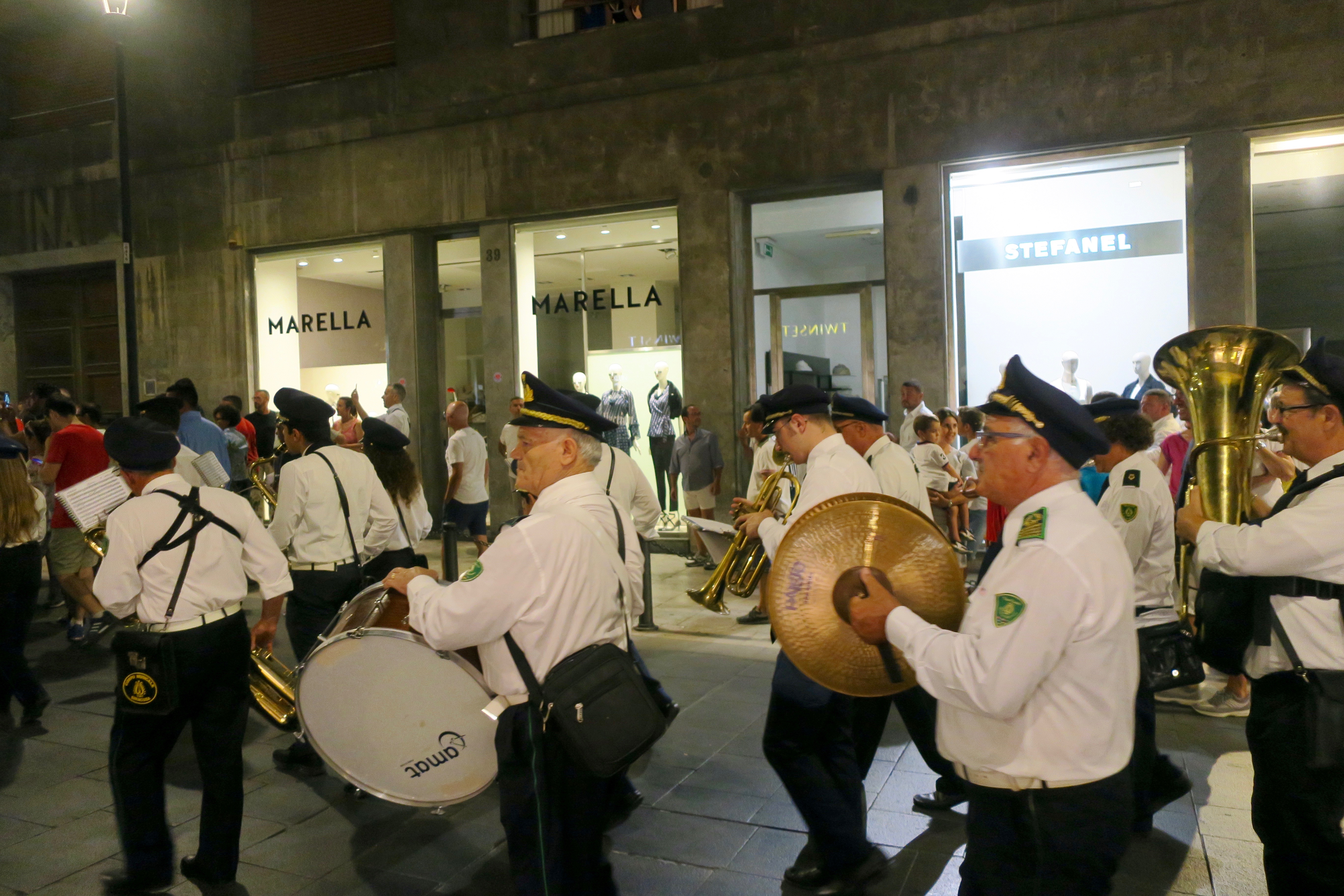
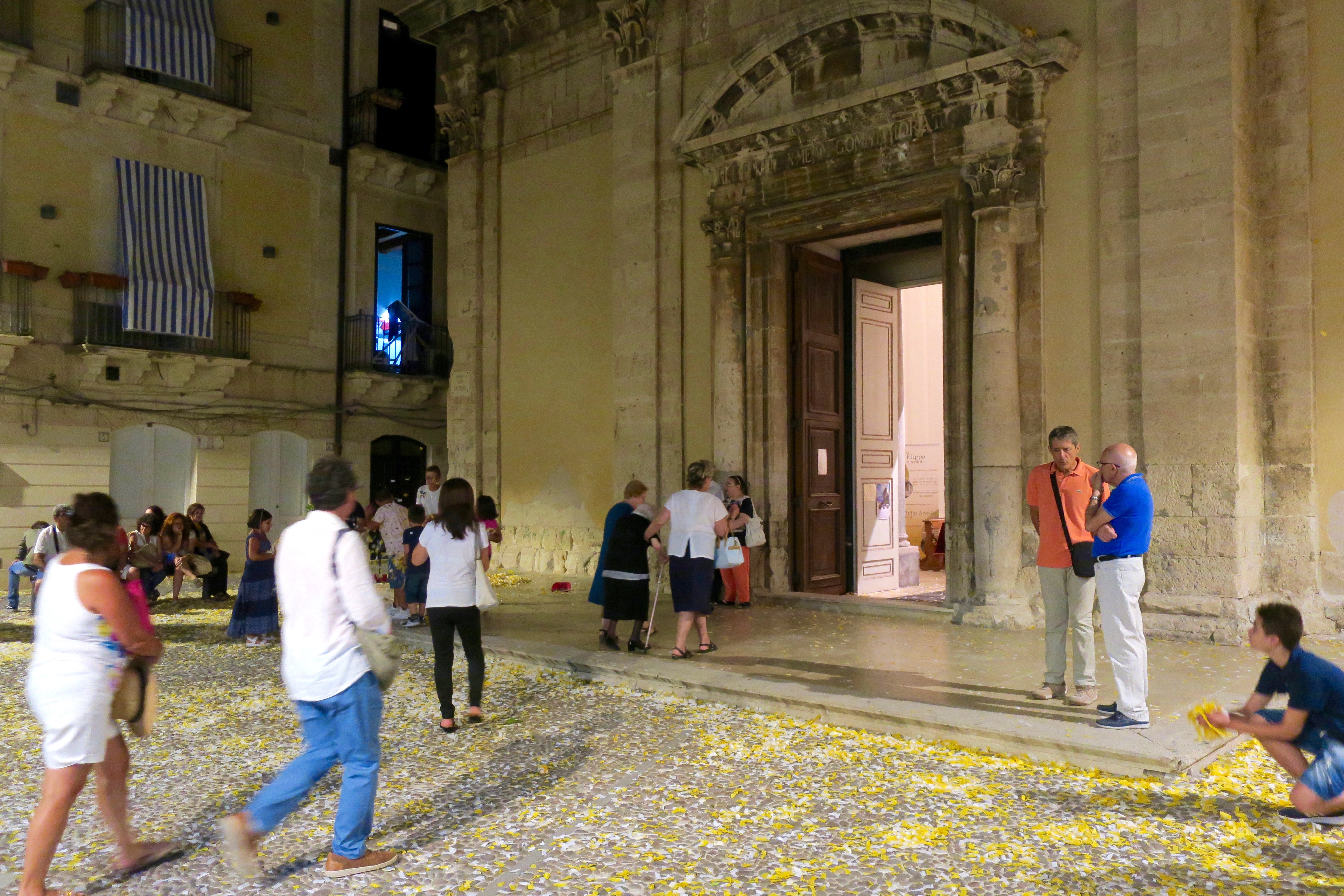
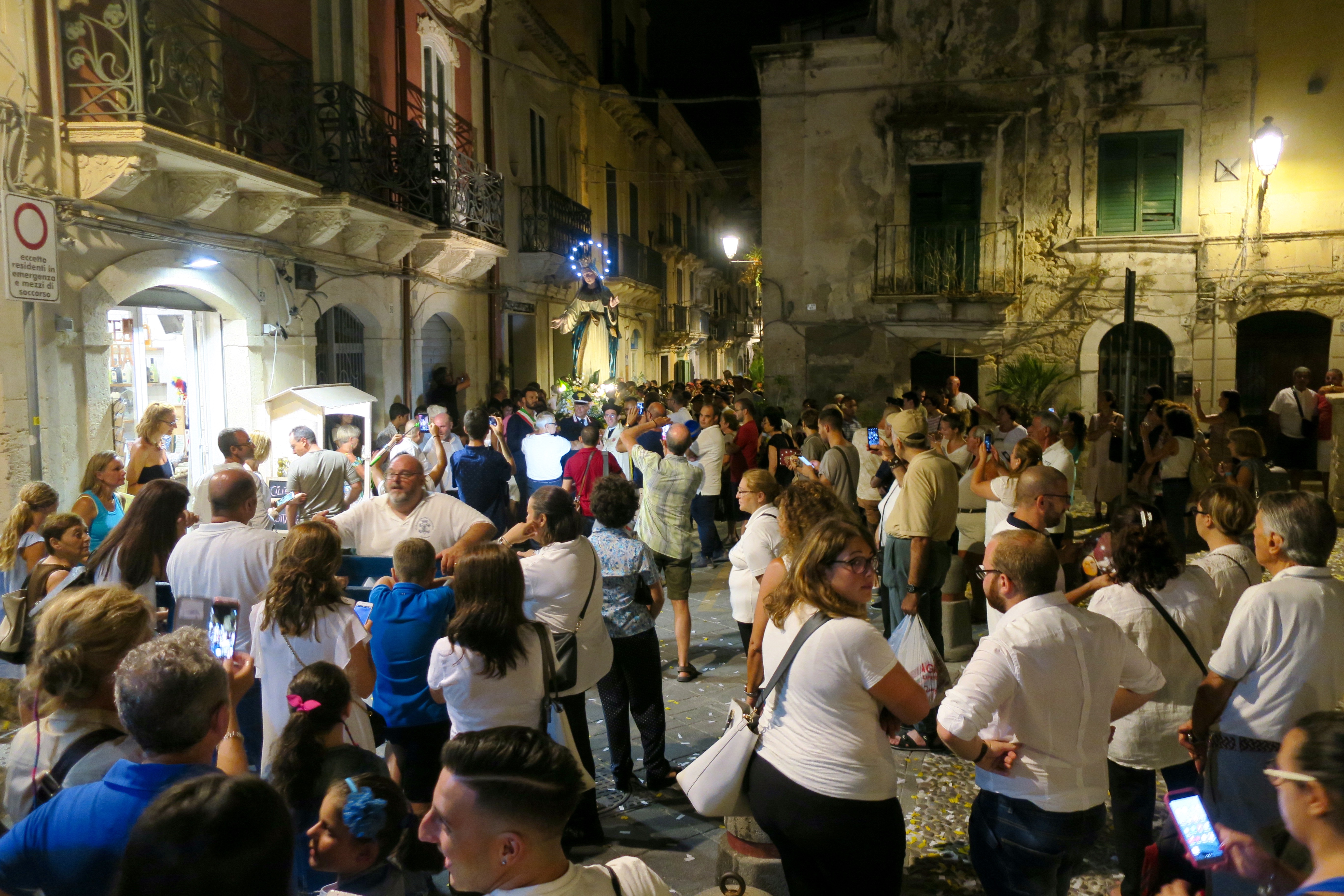
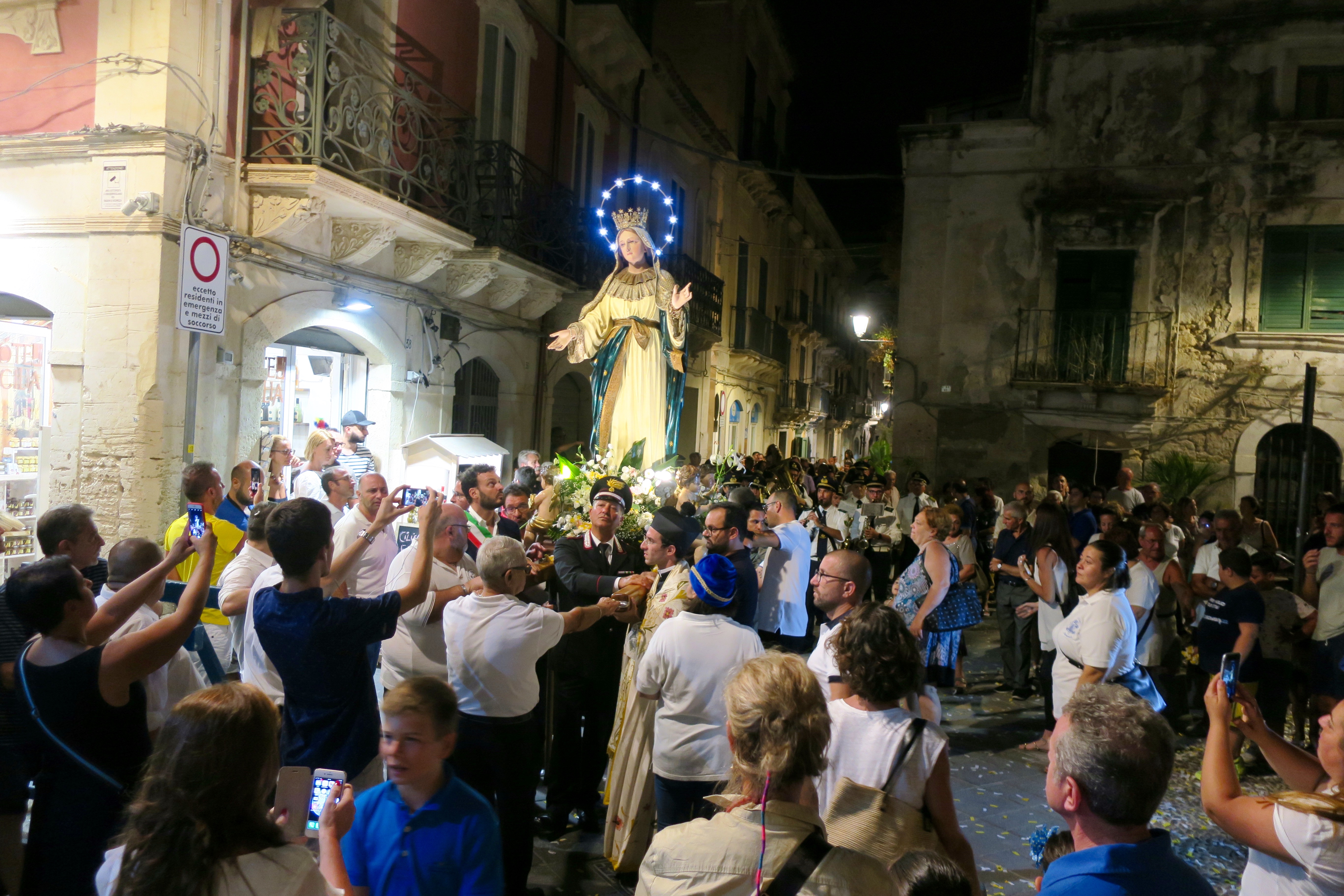
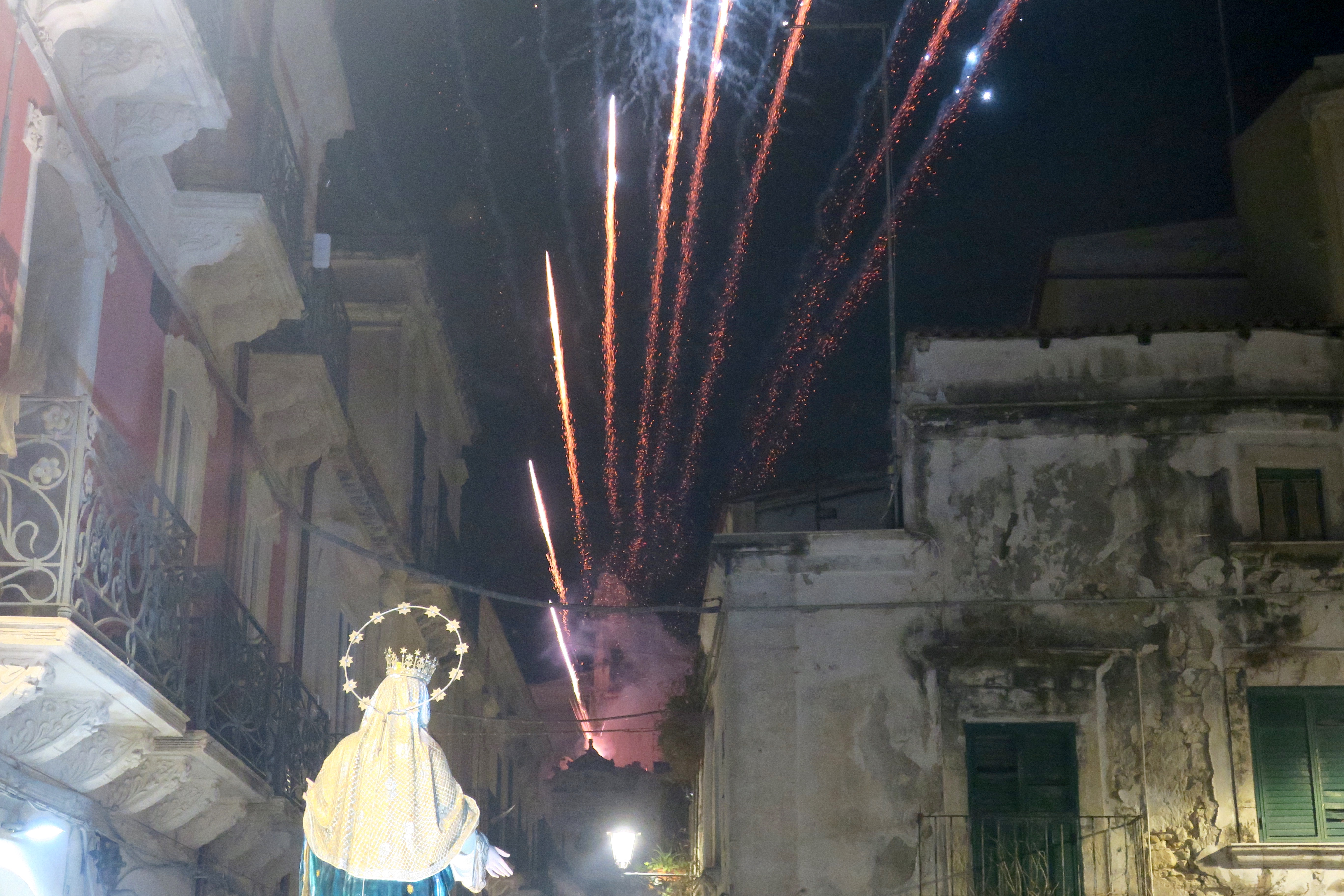
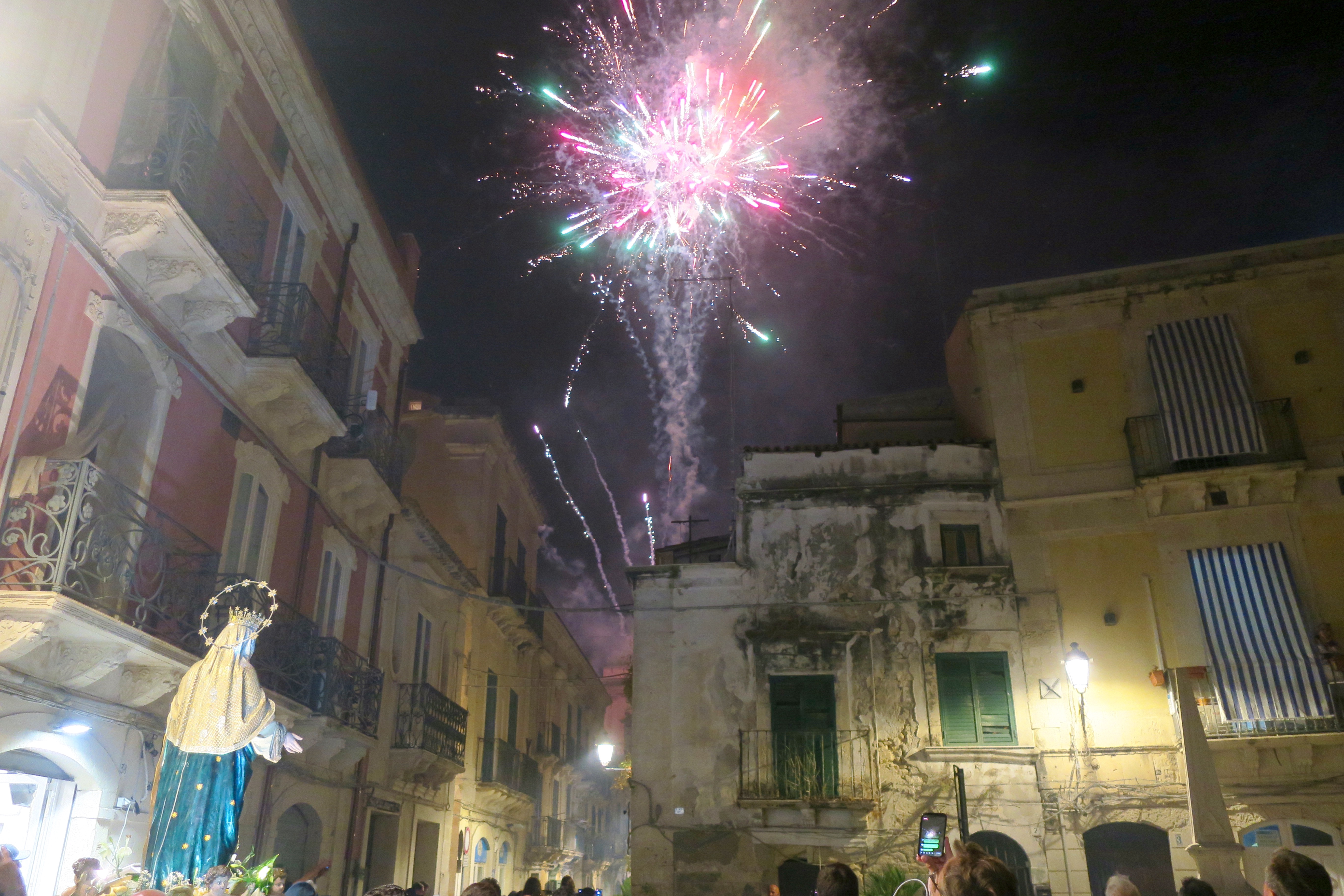






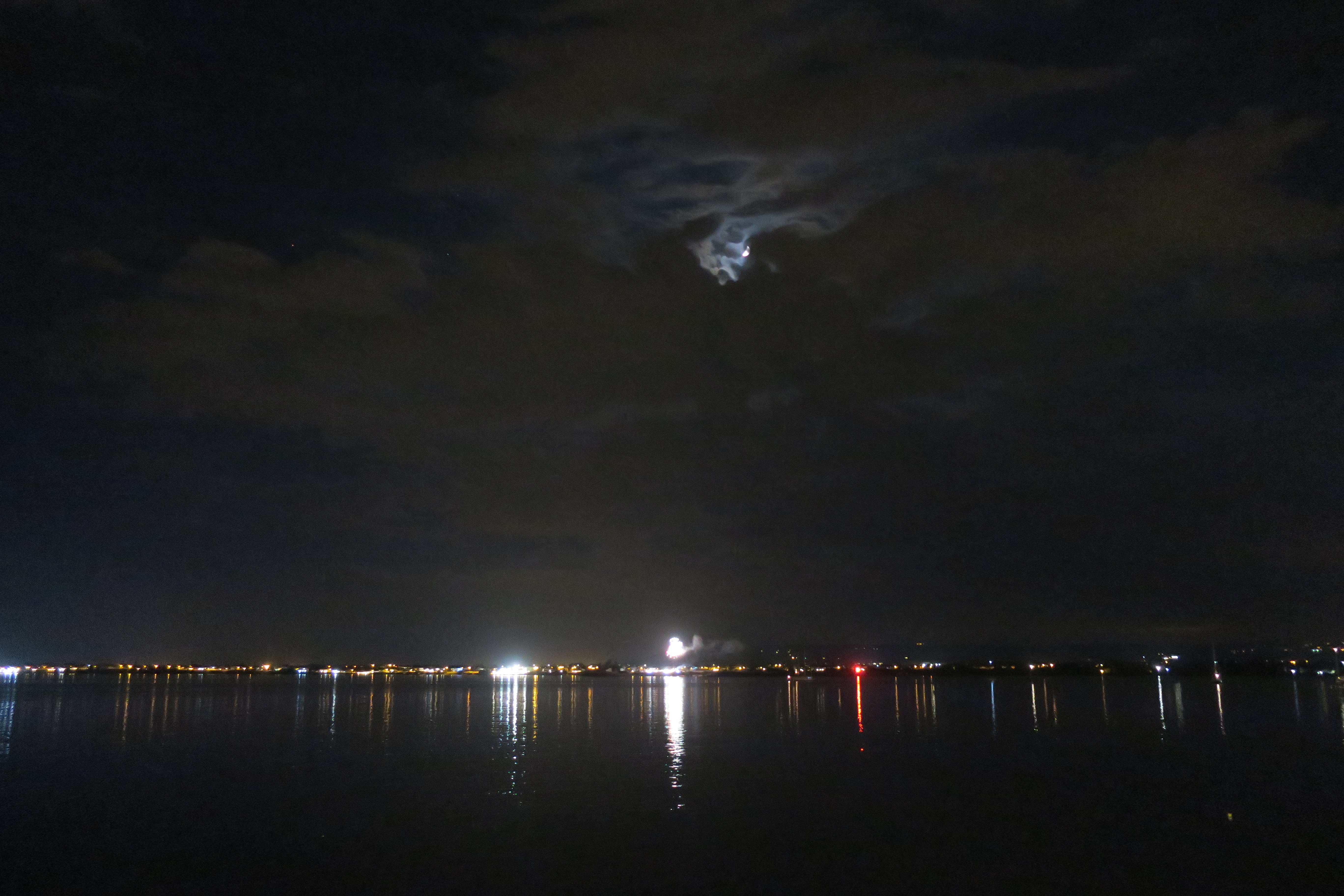
Wonderful photos. Excellent post.
Hey! Hello Bill, good to see you again. It’s been too long. Thanks for looking in. I hope you’re well.